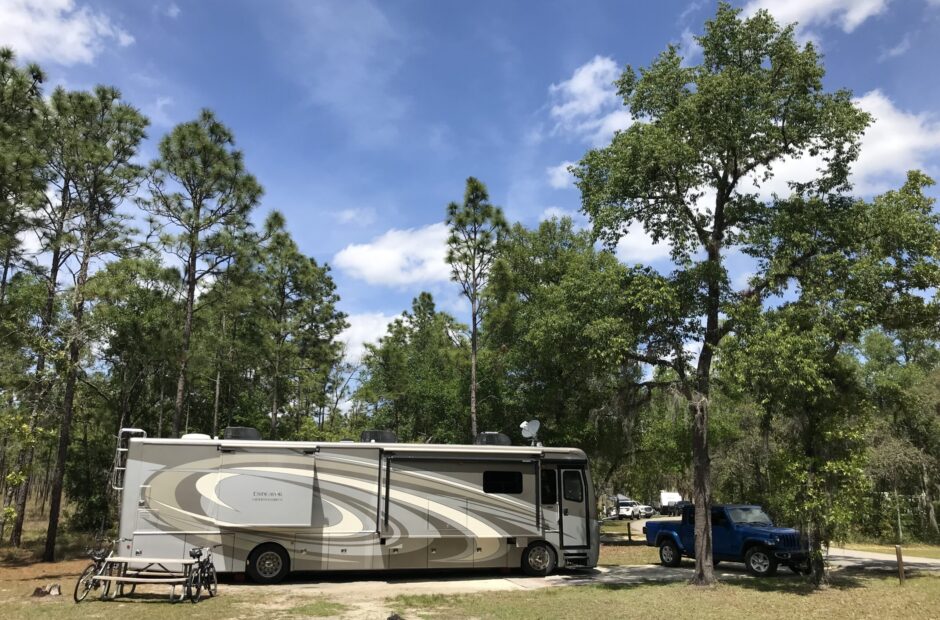Cumberland Island, Georgia (Still parked in St. Mary’s)
What a perfect time to lose our Critter Repellent!!!!! It was like walking (instead of driving) through one of those Wild Animal Parks! We had so many close encounters, I’m not sure I could recount them all without the aid of pictures – and there will be oodles and oodles of them!
And there was much more to enjoy than just critters!
It was a delightful day!
Cumberland Island is actually a National Seashore. The Island has 9,800 acres of Congressionally designated Wilderness. It’s 17.5 miles long and it ranges in width from 1.5 – 3 miles. It’s only accessible by boat. We had to take a 45-minute ferry. There were very few people here today.
There are three ways to get around – walk, ride a bike, or take a 5-6 hour van tour.
- The van tour was an additional $45/person – NOT. Not only is it in addition to the $30 ferry ride, there’s no way Blaine and I could enjoy something like that. For lots of reasons.
- The bikes ($16/day) can only be ridden on the roads – NOT. Just imagine how much you would miss out on!
- Walk – Now that’s the ticket! We saw an awful lot today! Things we NEVER would have seen from the seat of a bicycle or the interior of a van. The only thing we didn’t see was a 125-room mansion built for George Carnegie as a wedding gift from his mother, Lucy. (His father, Thomas was deceased. Thomas is the brother of Andrew who was the principle benefactor of Carnegie Hall.) We’re planning on doing the bike thing when we return sometime.
Are you excited? I hope you stay that way! Sometimes I think you all must surely get bored with all our pictures, but then I supposed you can just fly through them if you prefer. There should be at least a couple that catch your eye today!
Off we go!
We began our day at 8am at the St. Mary’s ferry dock. Great lighting for some pictures.
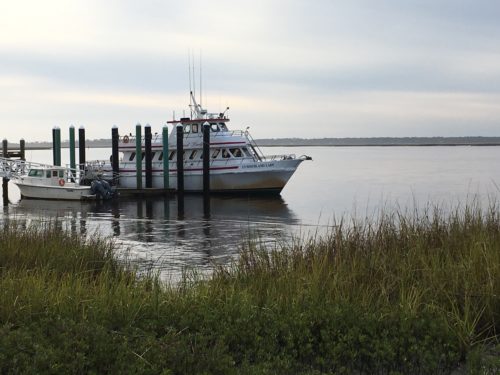
This is our ferry
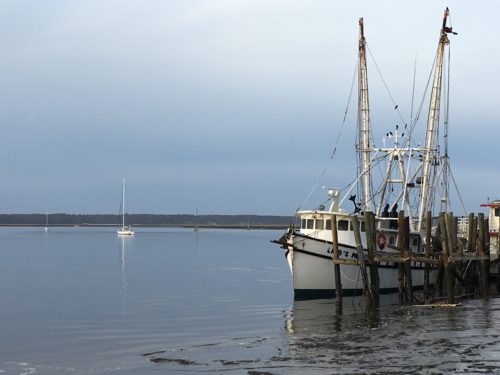
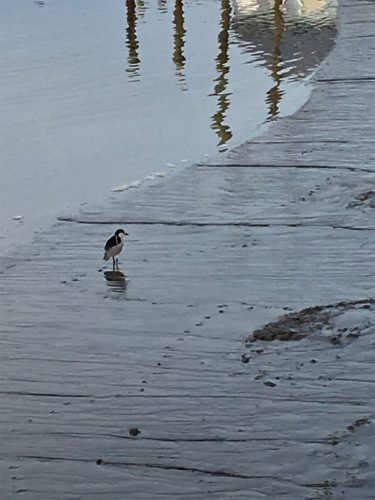
Not a great picture, but it was a different kind of bird.
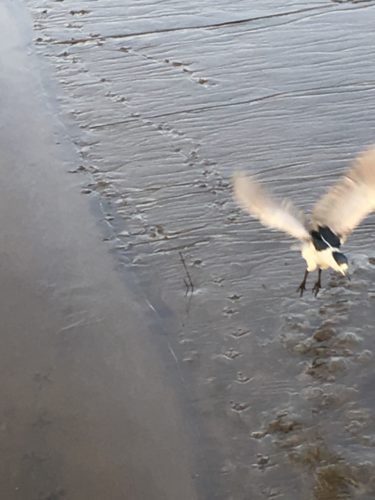
And then, suddenly, he took off!
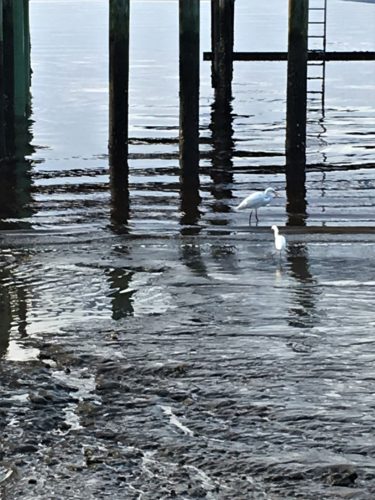
I took this simply to show a size comparison of these two kinds of egrets.
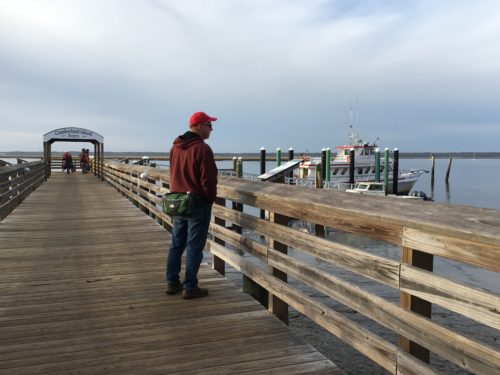
It’s too early to board, so we were just ambling around.
Probably one of main reasons we have so many bird pics! : )
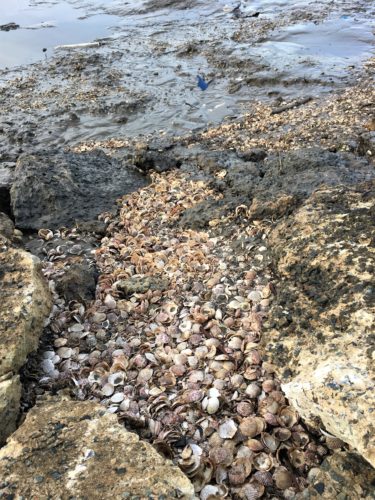
And why we have these shell pictures. : )
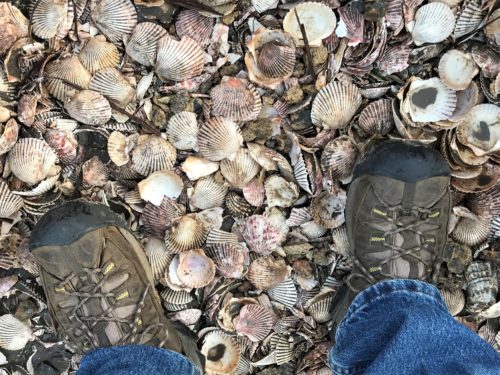
“Here’s my feet!”

I took this simply to show a size comparison of these two kinds of egrets.
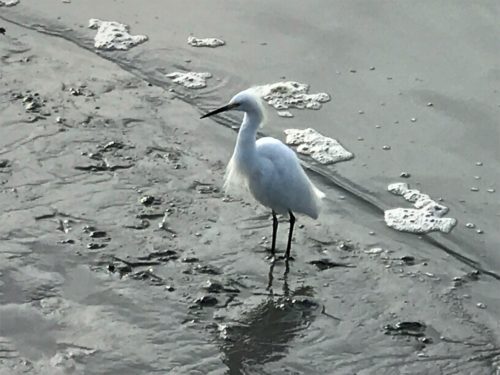
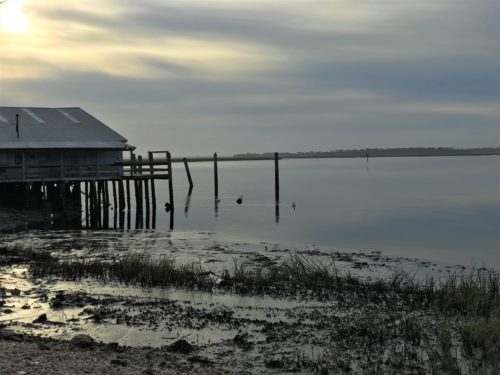
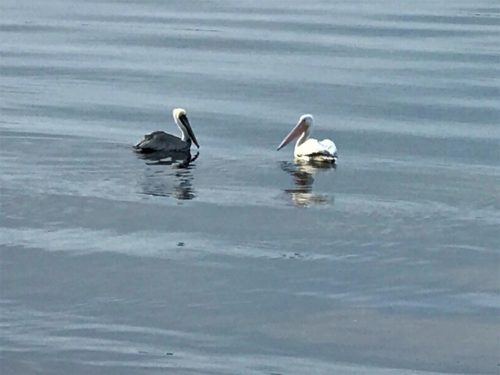
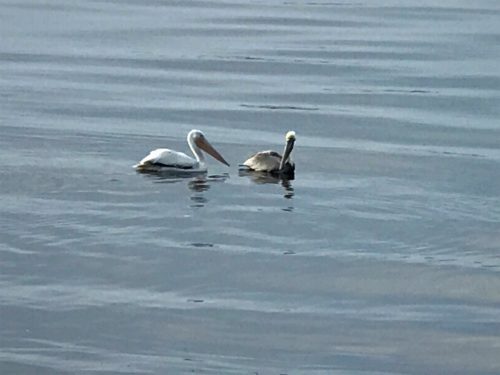
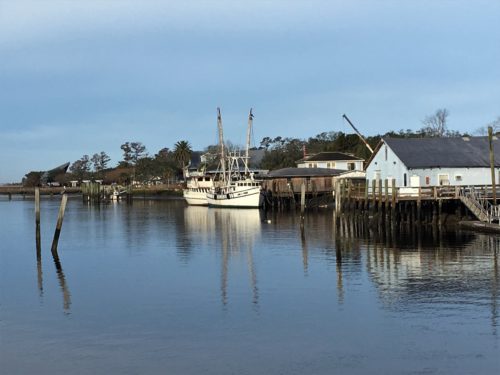
Leaving the dock behind
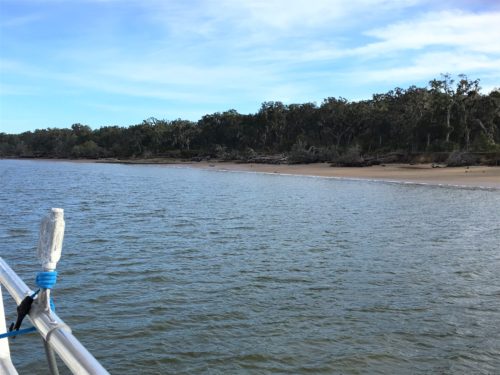
After 45 minutes, we disembarked and entered wilderness almost immediately. We’ve been on quite a few trails similar to this – live oaks, Spanish Moss, palms – but there was something different about today. I just can’t put my finger on it. Maybe it’s the fact that it’s wilderness and comparatively speaking, few people have been here. Maybe it was all the horse droppings.
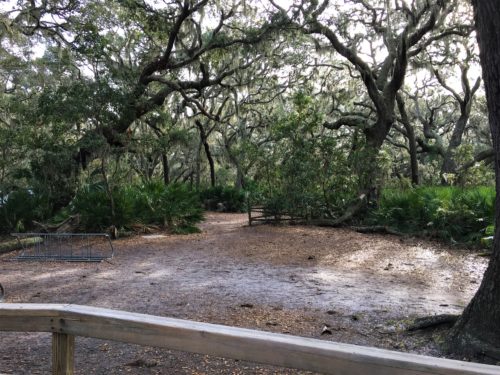
Our first look
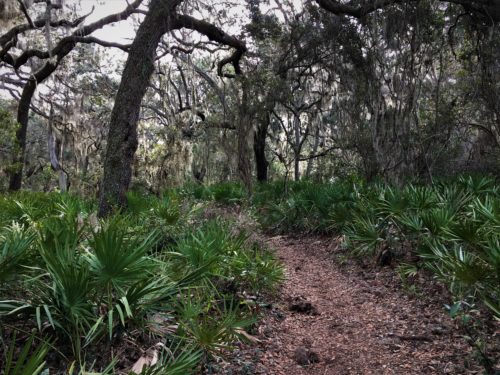
The River Trail
Blaine spotted dolphins swimming up the river, but I missed them. There are also manatees in this river, but I think they were somewhere else due to the recent cold. We heard a news report that they’re huddling (somewhere) to stay warm.
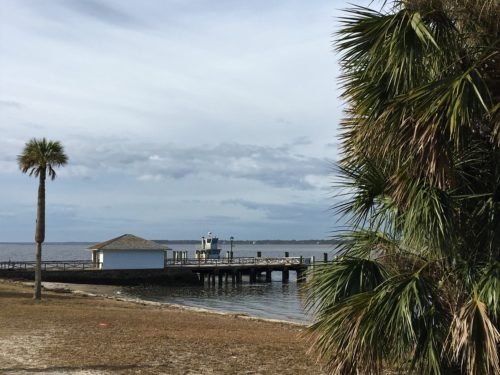
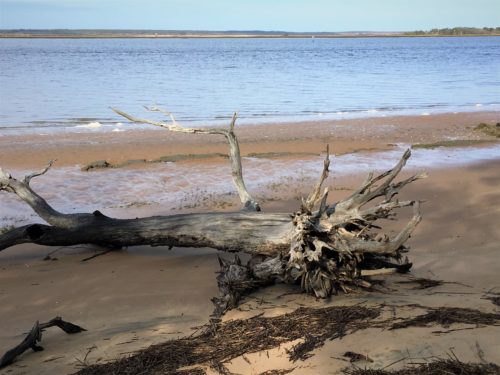
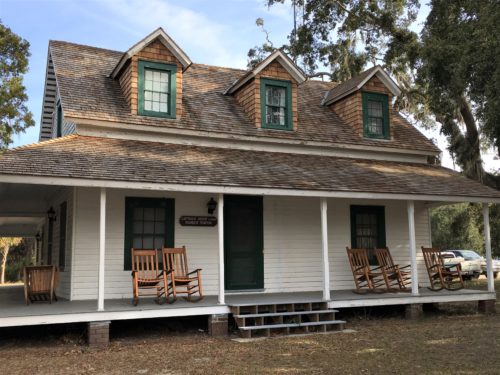
This used to be the captain’s house and is now a ranger station.
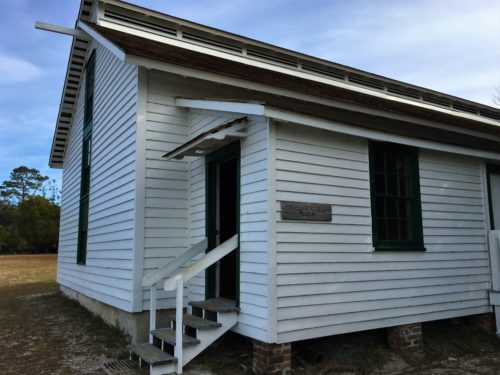
The Ice House Museum.
It’s actually inside the Carnegie’s former ice house, built in 1900
Some interesting information in here.
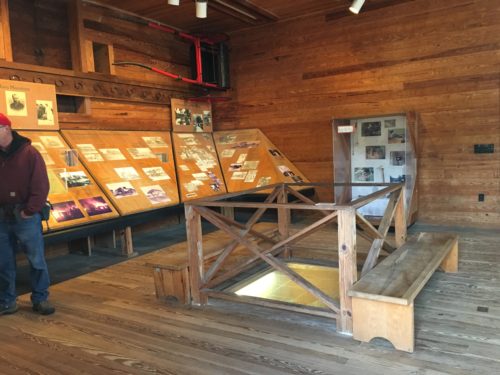
When they were excavating, they discovered a tabby foundation from a general store that one of the previous owner’s sons had.
We read about this house the day before, but until we put the information together, we didn’t realize what we were looking at. This house was a 4-story tabby started by Nathaneal Greene (an officer in the Revolutionary War). He died and his widow and her new husband finished the house. This tabby house is the one General Henry Lee died in, in 1818. (You’ll read about him later.)
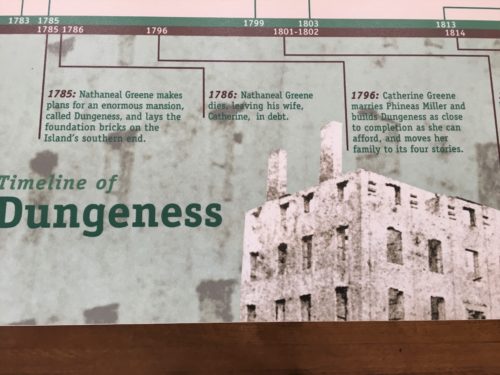
The first Dungeness
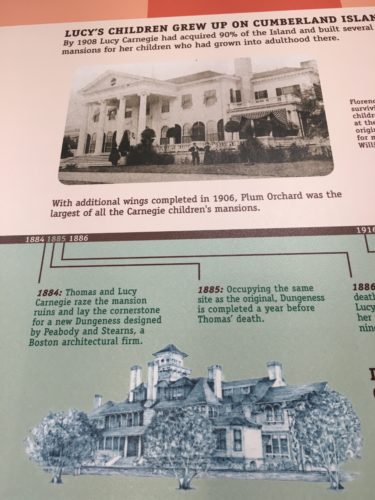
It’s the bottom picture we’re more interested in for this post. We won’t visit the top one until we return some day.
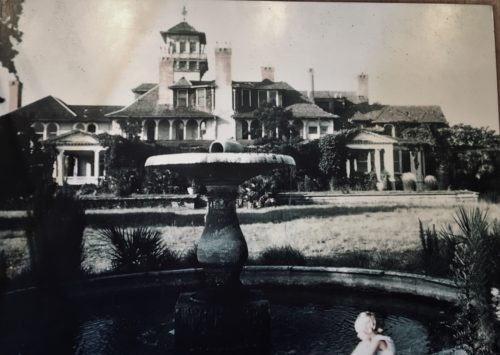
Remember this picture.
We’re going to take a similar one later.
The second Dungeness
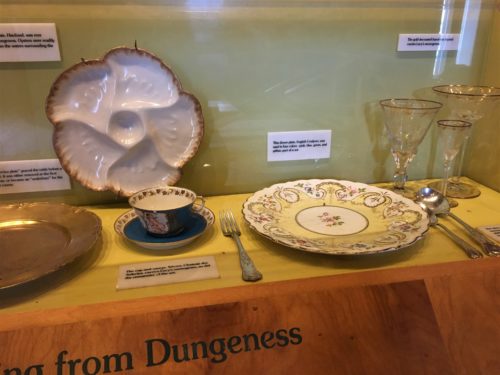
That white dish is an oyster plate.
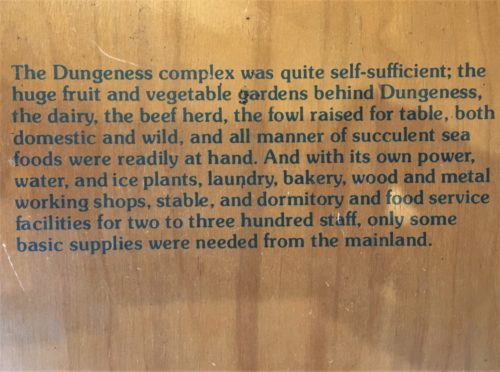
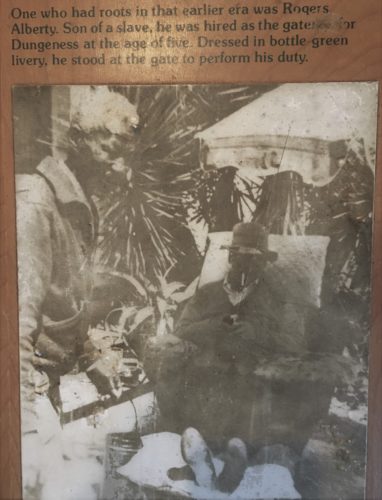
This is a picture of Rogers Alberty. He was 5 when he came here.
He died in 1957 at the age of 84, under the care of Thomas Carnegie (also in the picture).
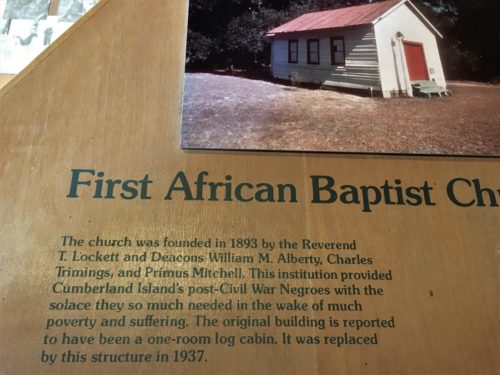
This is waaay up at the north end of the island.
I doubt we’ll visit it even when we go back and rent bikes.
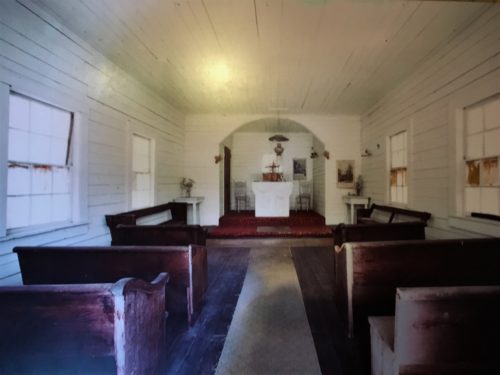
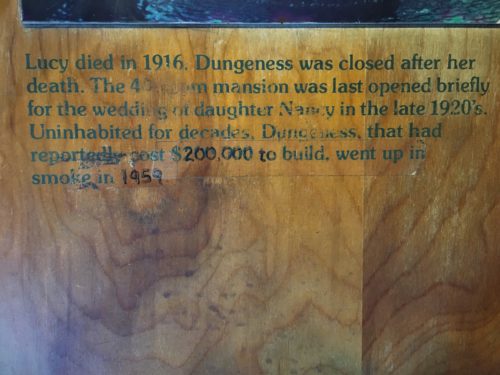
It is suspected that it was burned down by arsonists, angry that the wildlife on the island was protected.

The fire of 1959
It burned for 3 days
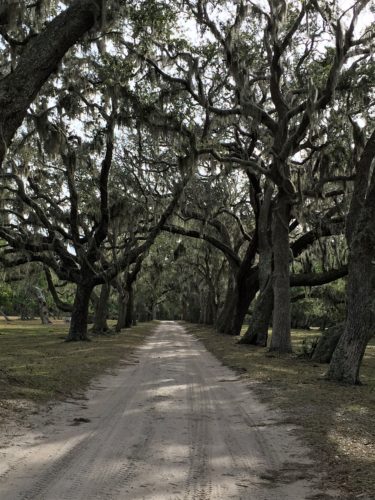
This part of the trail looks more like a road. : )
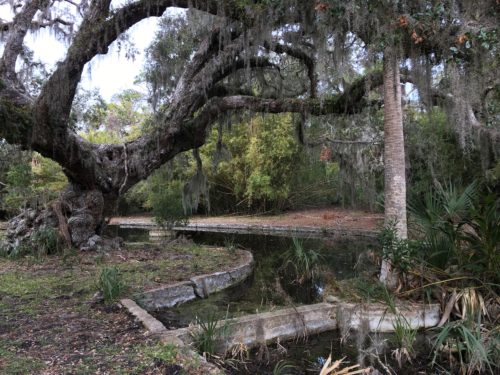
We came across the remains of one of the Carnegie’s children’s homes.
All that’s left of this place is the pond, and it’s not in very good shape. : (
We had been told several times to steer clear of the feral horses that inhabit the island because they bite and kick, and as I said, we saw lots of droppings on our trail, but nothing else.
Until . . . .
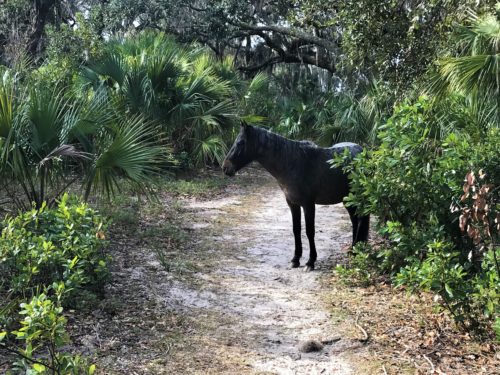
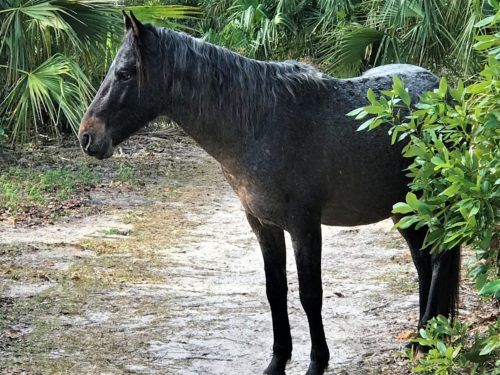
Now what? He’s just standing there blocking the trail for cryin’ out loud! What are we supposed to do?
What else? Pose for a picture!
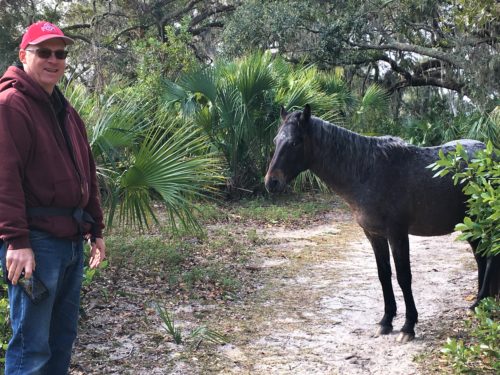
Smile for the camera!
Um. Maybe not.
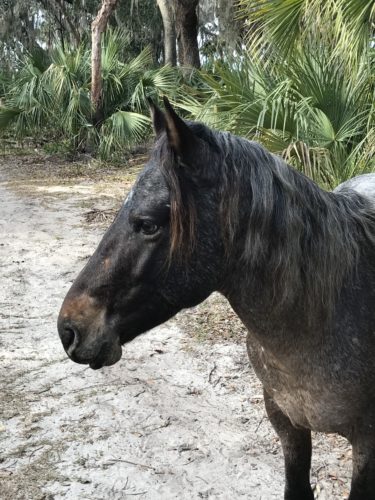
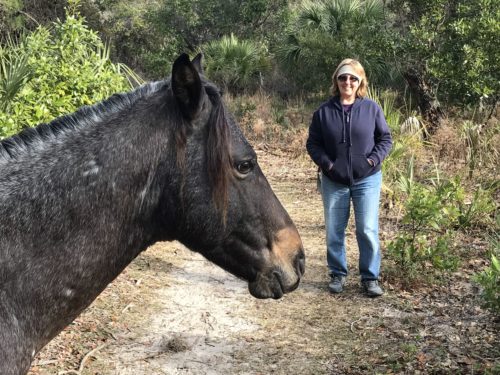
Blaine made it!
Now it’s my turn!
Anyway, we eventually – cautiously – stepped out in faith and walked around him. He never moved. Blaine said his tail was stuck in the palm and he couldn’t. 😊
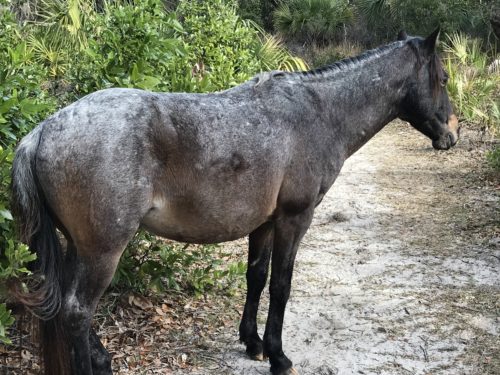
Remember what this horse looks like. He just might turn up again later . . . .
On we go, until we come to sand dunes! Well, what are you thinking? Of course we left the trail! We started following horse tracks to see where they would lead. Turned out – nowhere. But we did find a couple of other interesting things!
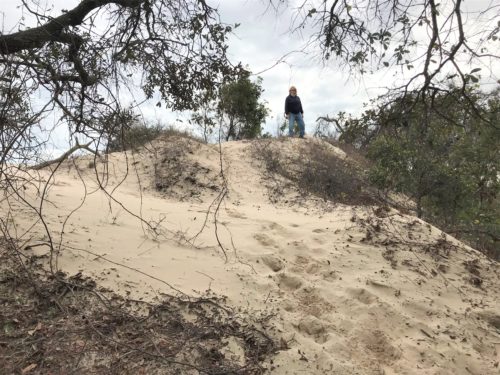
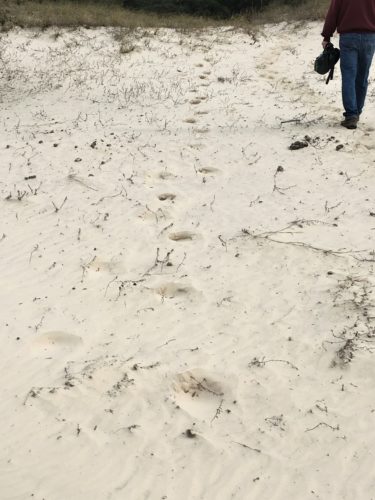
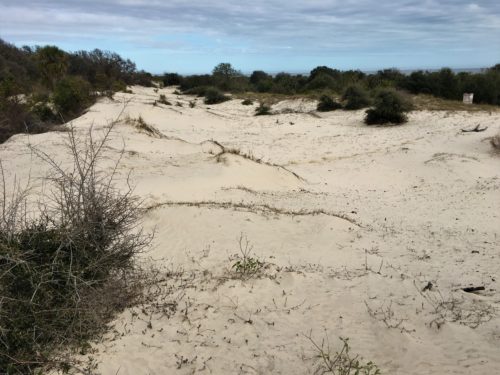
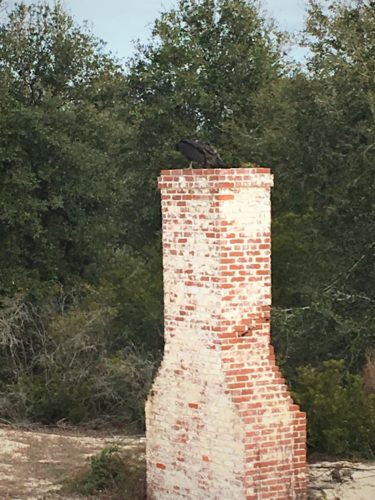
Vultures on a chimney . . .
In the middle of sand dunes . . . ???

It’s hard to imagine there was a home here at one time! Although there was no indication of whose, we believe it was one of the 9 homes Lucy Carnegie/Miller built for her children.
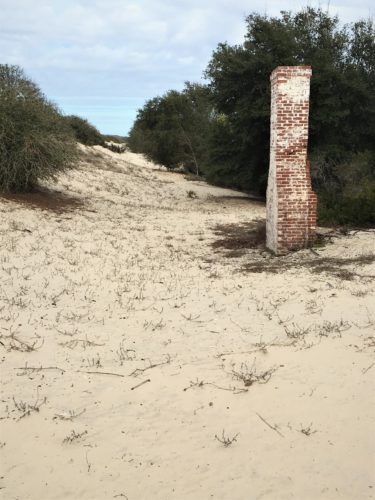
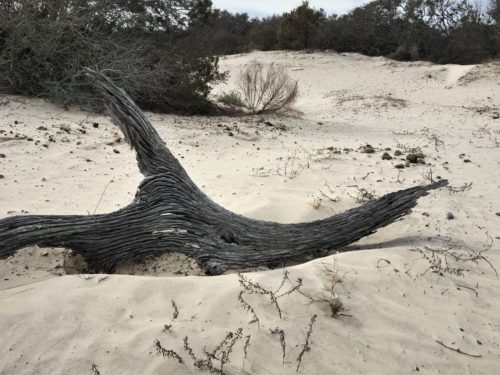
As we headed back to the trail, we discovered a foraging armadillo!
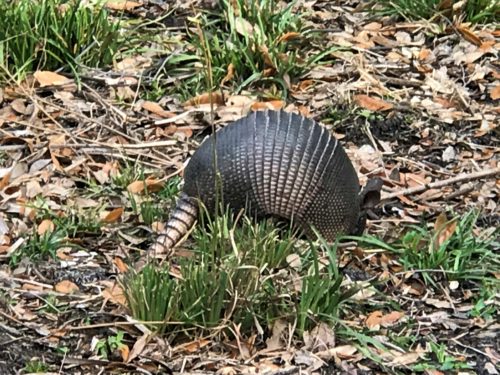
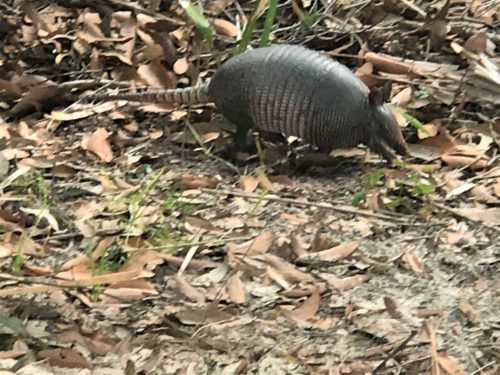
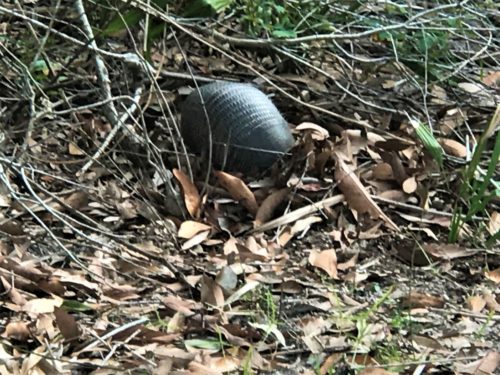
Here’s some brief information on armadillos since we don’t get many of those in Ohio. 😊
The only one in the United States is the 9-banded kind. They eat bugs and worms. They don’t roll up for protection. They have their shells within 2-3 days of birth. They’re solitary unless they’re breeding or it’s cold. I imagine there’s been quite a few armadillo snuggle fests in Southeast Georgia lately!
Back on the trail . . .
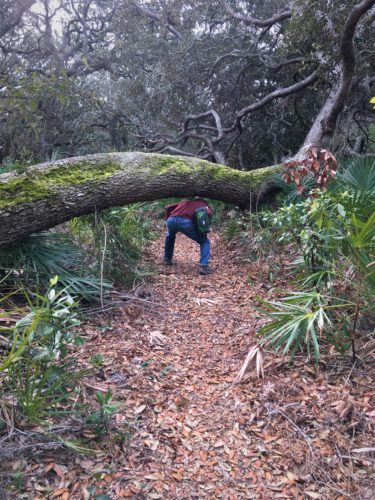
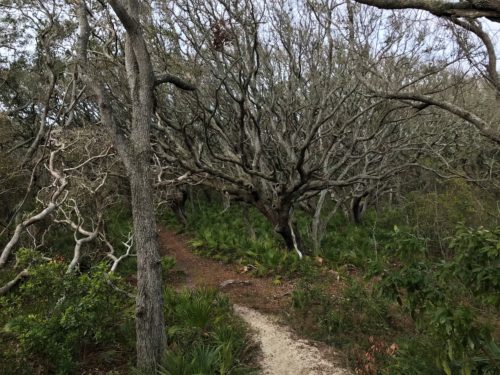
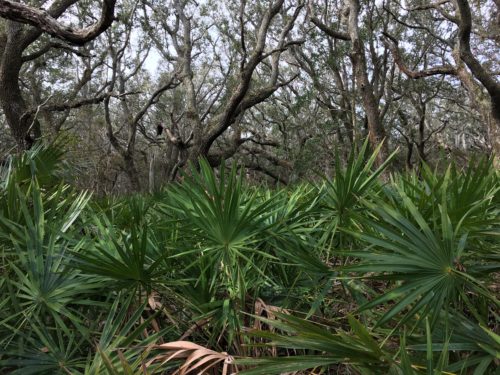
This is what I see on either side when I’m walking on this part of the trail.
Blaine’s tall enough to see over top of it. : )
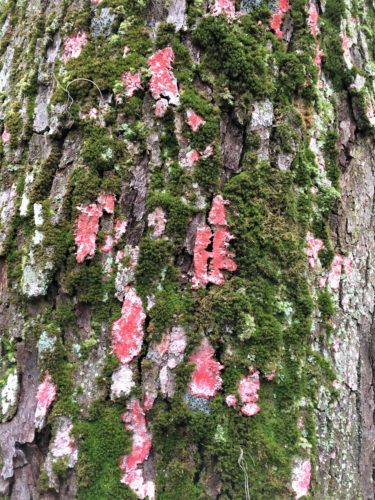
Moss and some kind of pink fungus. Pretty!
We’ve arrived at our destination and find ourselves facing the entrance to the Dungeness ruins!
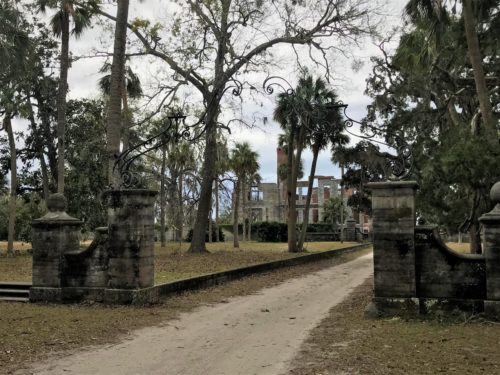
The entrance to Dungeness
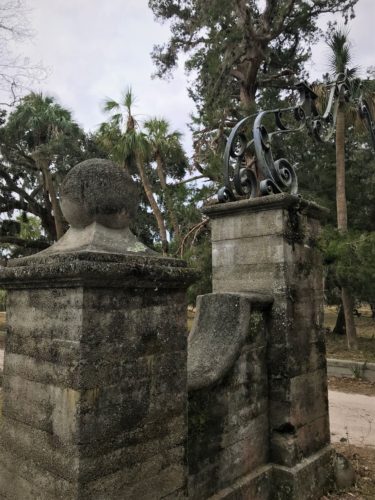
The ruins were so much more spectacular in person than a photograph could ever convey! One of those indubitable ‘WOW’ factors!
These pictures are all from the ‘front’, aka the way we came in and the way the carriages came up.
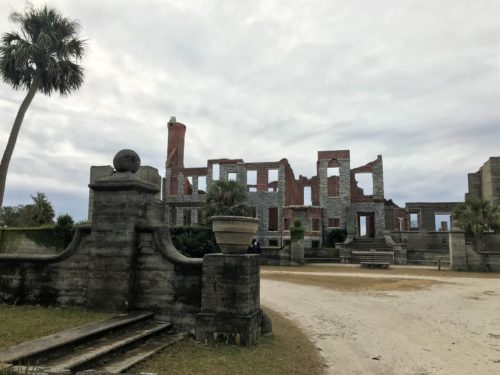
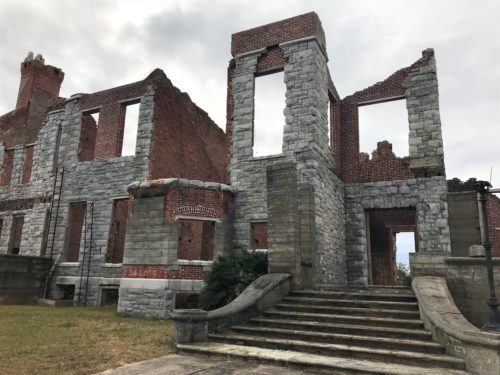
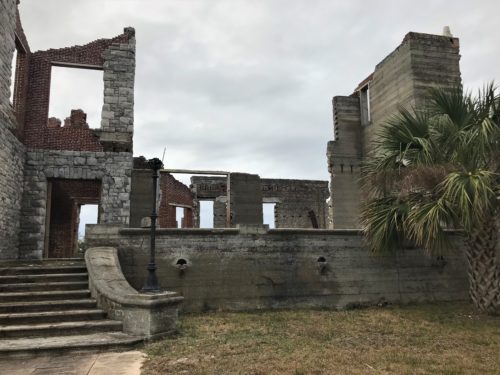
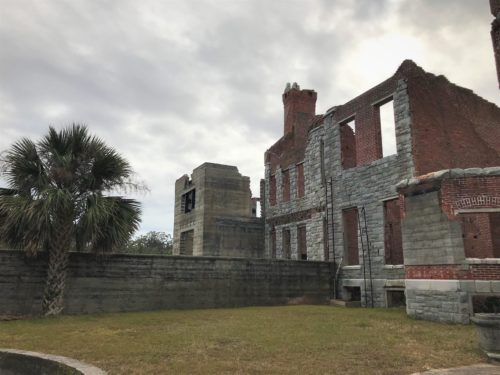
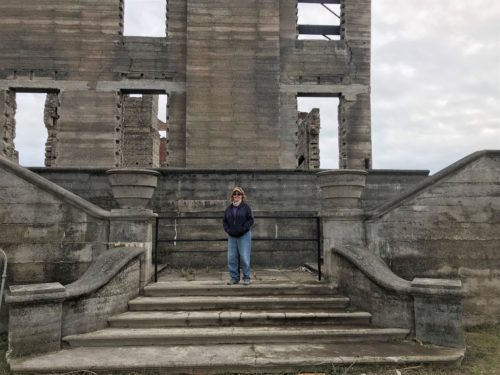
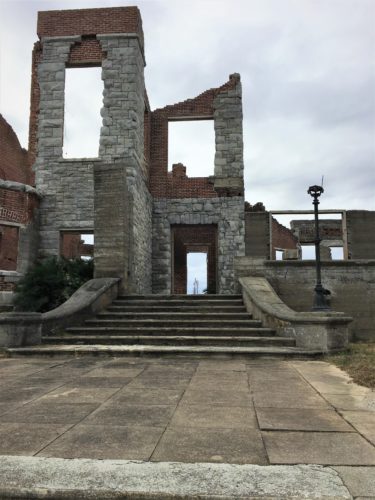
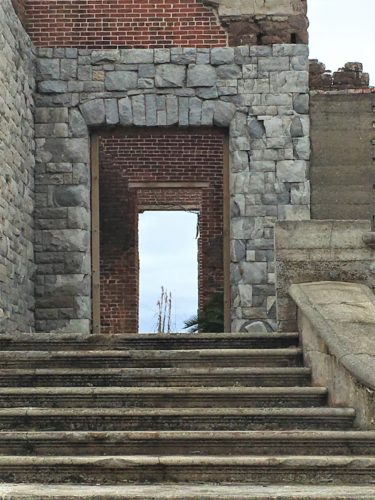

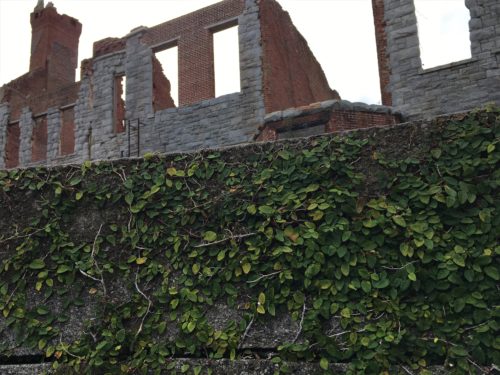
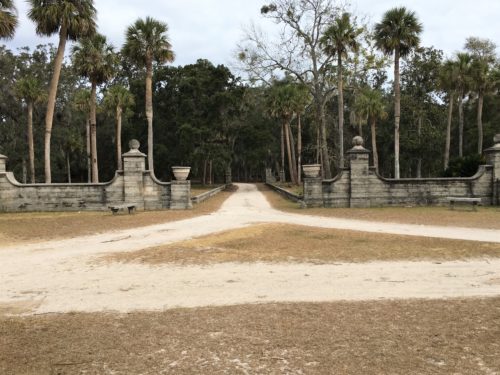
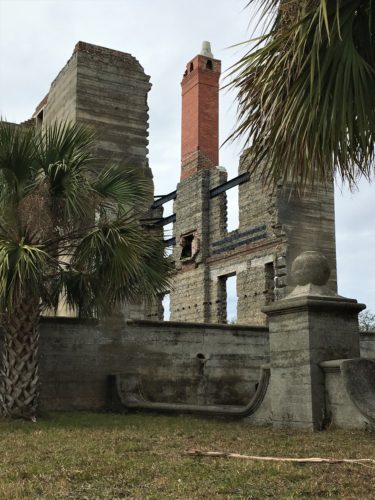
Note the steal supports holding some of the structure together.
We don’t know when they were added.
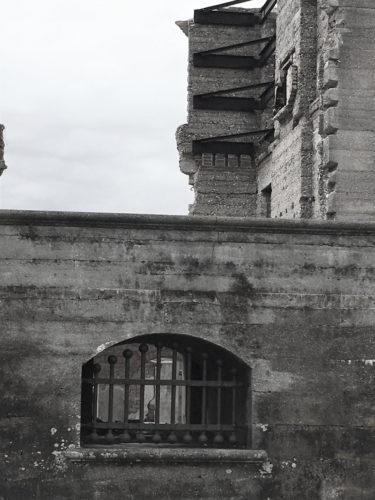
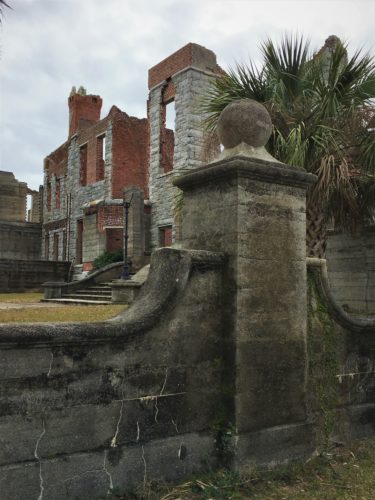
Let’s head around to the back – – –
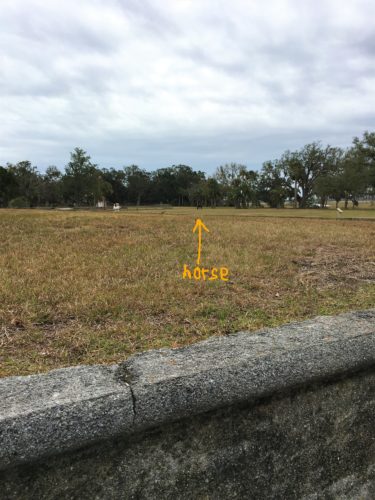
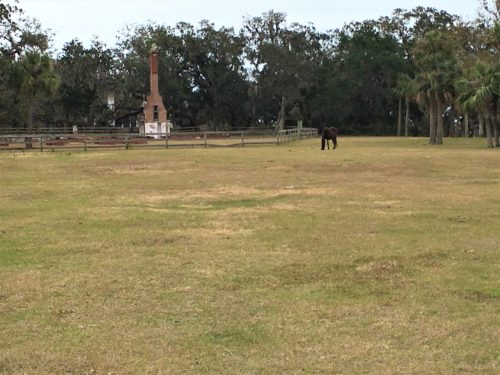
The tower is part of the Recreation Building
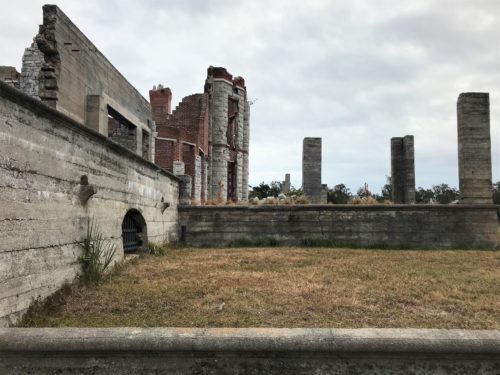
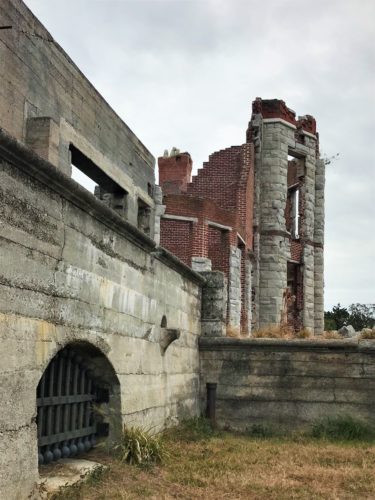

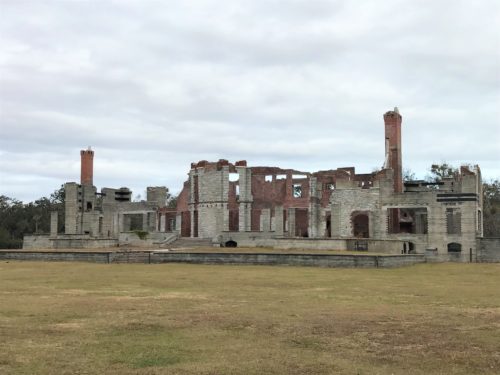
Remember when I told you to take note of the picture of the mansion with the fountain in front?
The fountain is just to the left.
We spent some time walking around, marveling at what this 59-room castle must have been (at one time, there were a total of 40 additional buildings and a staff of 200!), and tickled at the horses grazing without a care for the people milling about.
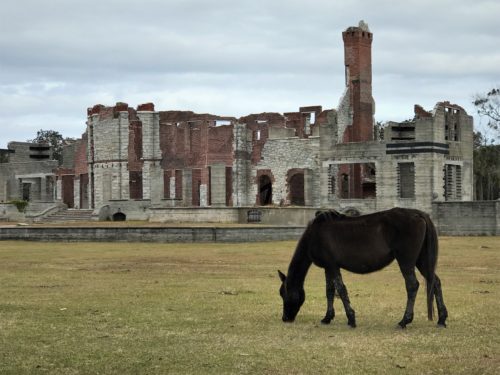
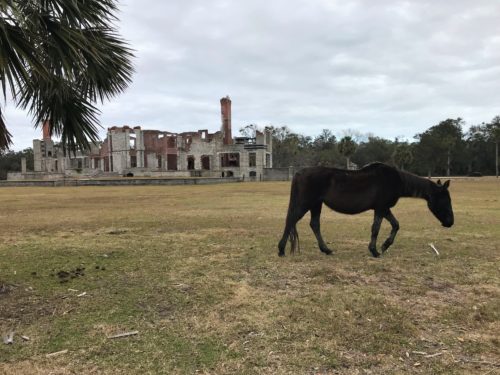
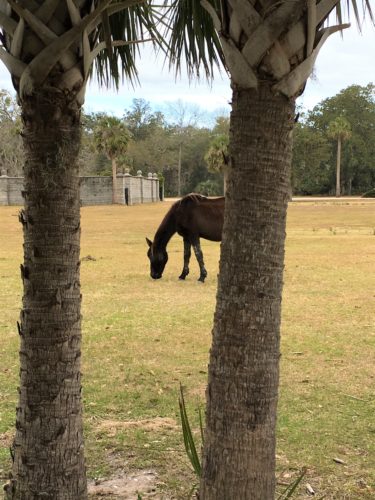
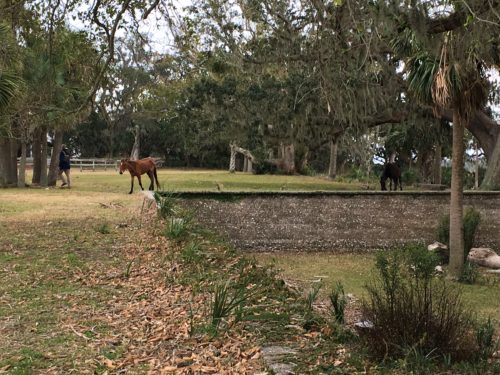
We had lunch . . . .
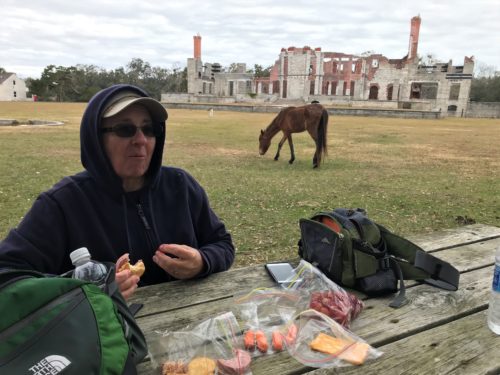
Blaine’s lunch view
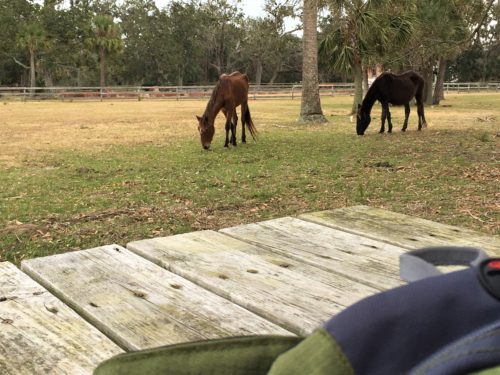
My view!
We visited some of the other things on the property, including . . . .
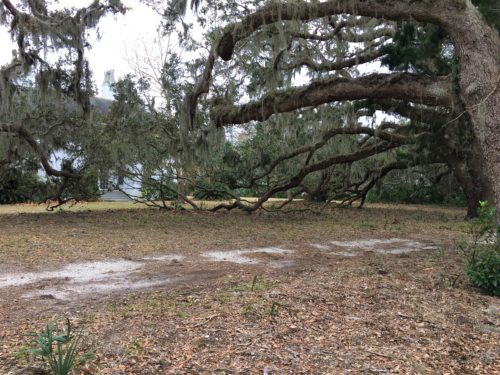

This house.
There was nothing to tell us about it except a sign that said it was public property.
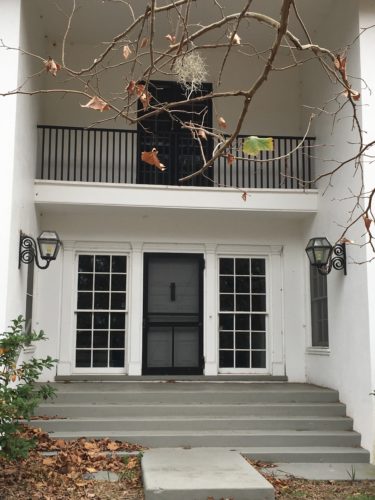
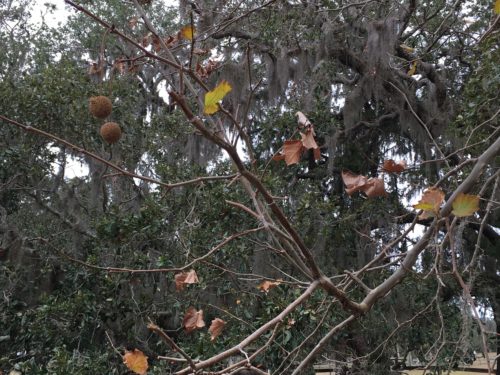
Still signs of Fall
And tried to get ourselves in trouble again.
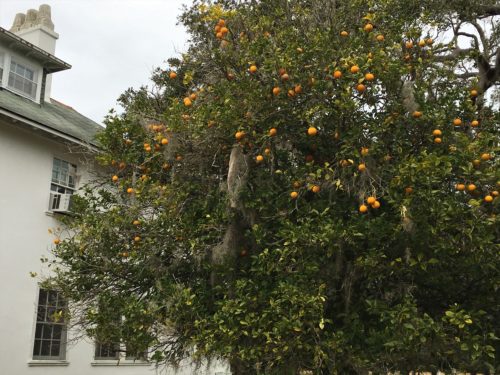
Well! Look at that!
An orange tree!
Since there was a sign that said this property was public (there are some residents living in some of the houses on the island), we figured the fruit was fair game!
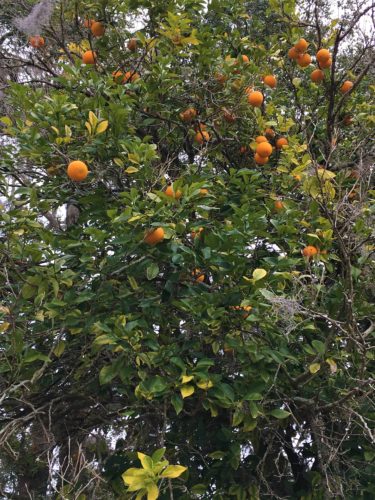
The problem was . . . how to get it?
There were these steps that led to nowhere, so after looking around stealthily, Blaine had me stand on the top one, I crawled onto his shoulders, and off we went to the tree, grabbed an orange and then back to the steps to dismount! Hey! You’re only as old as you act!
Fortunately, we were unsuccessful in the trouble-making department, but we were successful in our quest! Can’t wait to try it!
We continued our exploration around the grounds a saw . . .
A boat dock
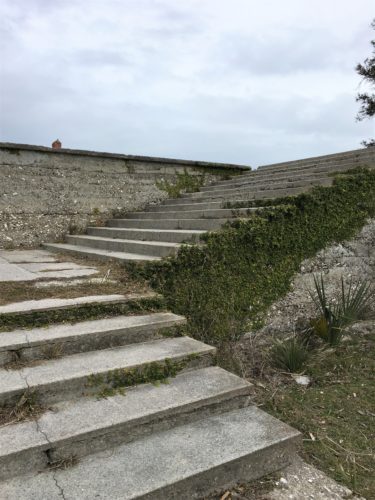
Steps to the dock
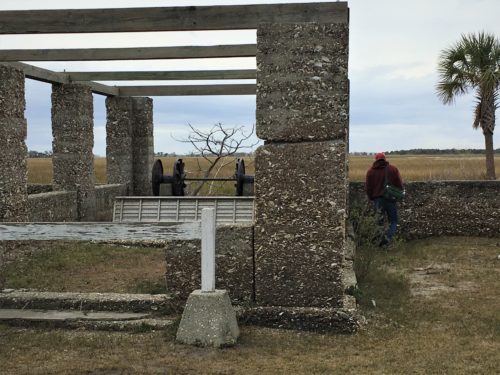
Boat storage
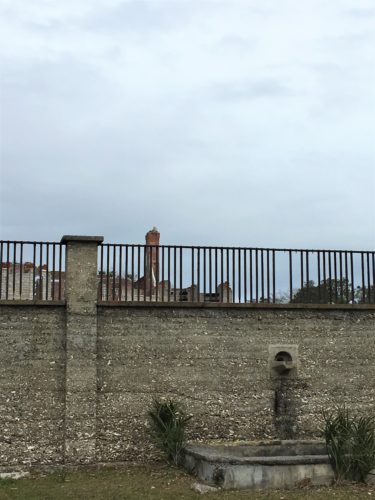
Looking back toward the house
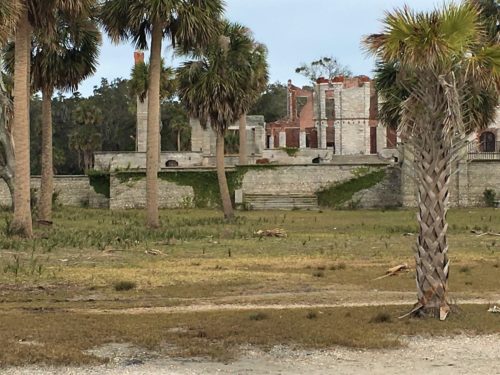
Also looking at the house
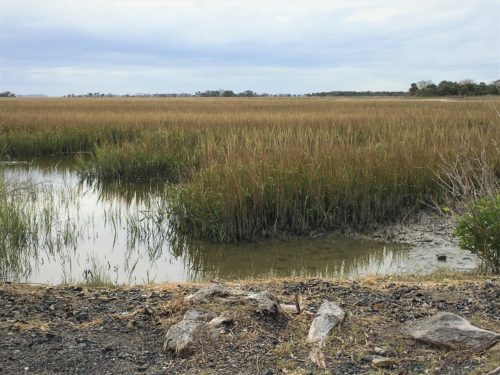
The marsh
The Greenhouse
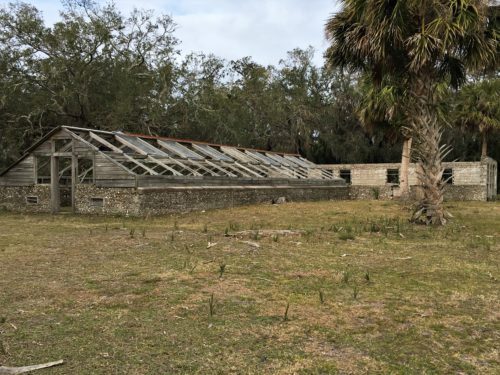

See the air vent (bottom right)? It still works!
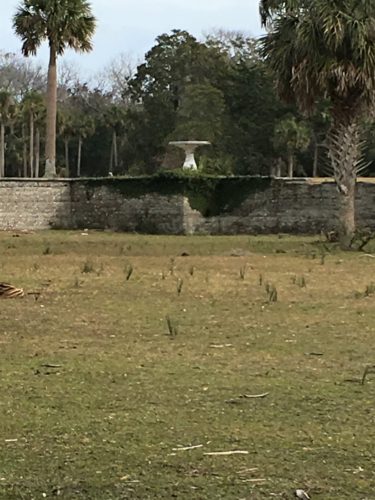
There’s the fountain
More horses
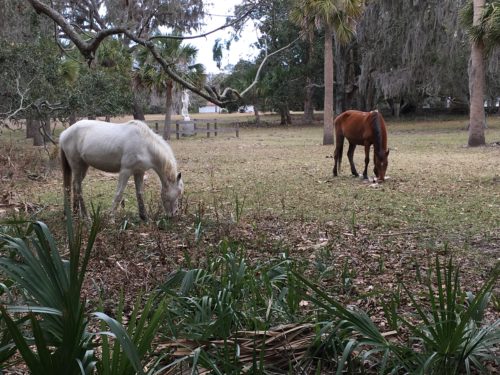
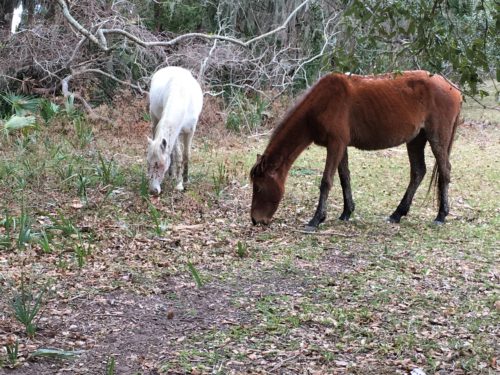
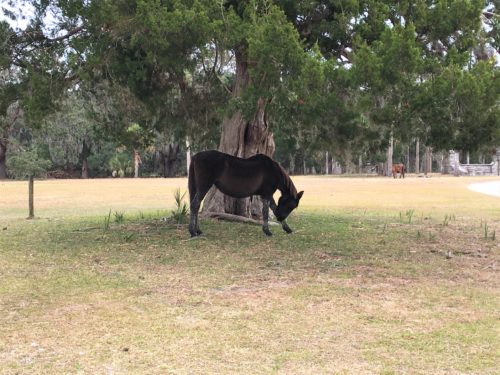
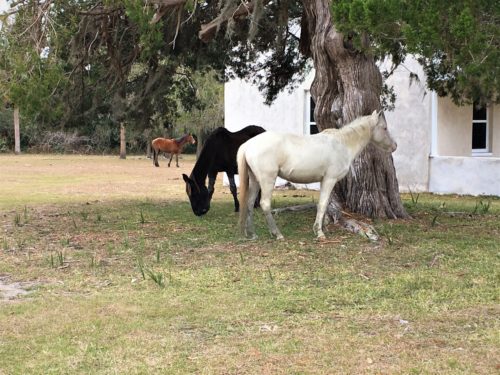
Deer
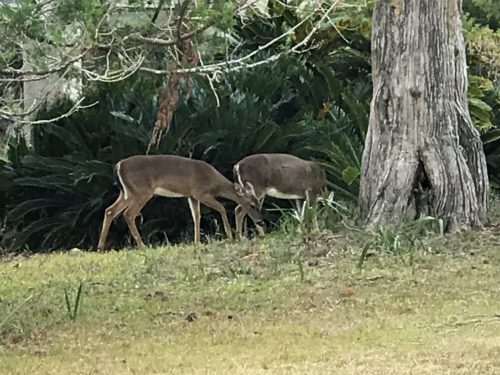
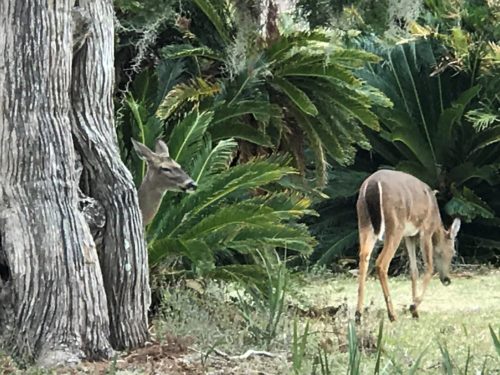
A pergola
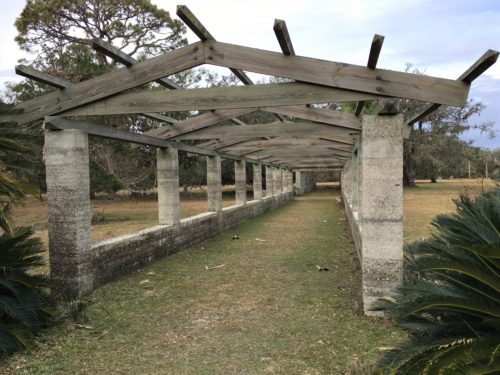
Know what that is? It’s kinda weird because we came across this (with a sign, but not a description) and then later, I came across the same word in the book I’m currently reading. 😊 Anyway, here’s what Webster has to say: an arbor formed of horizontal trelliswork supported on columns or posts, over which vines or other plants are trained.
And what remains of the recreation building
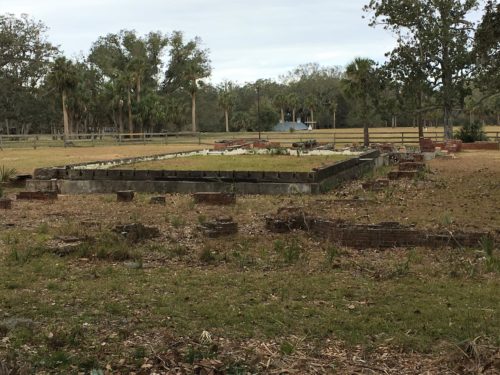
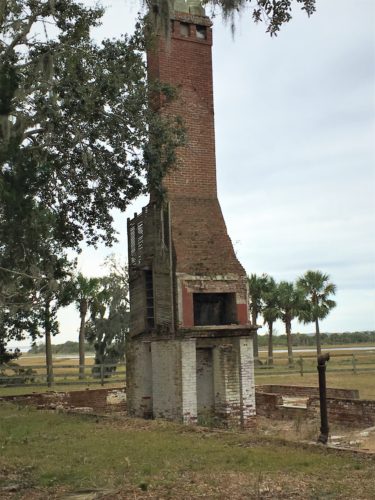
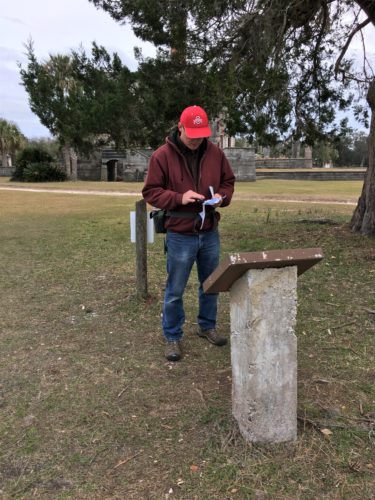
Trying to figure out where the trail is.
Some things aren’t marked very well.
We left the grounds for another trail – The Raccoon Trail.
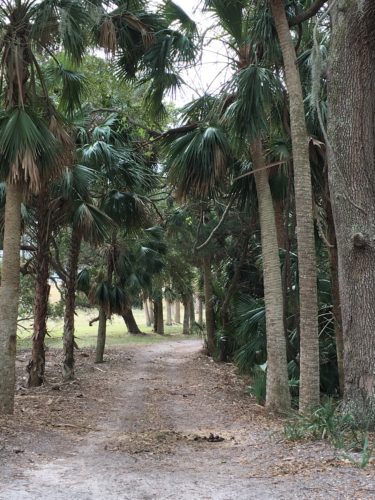
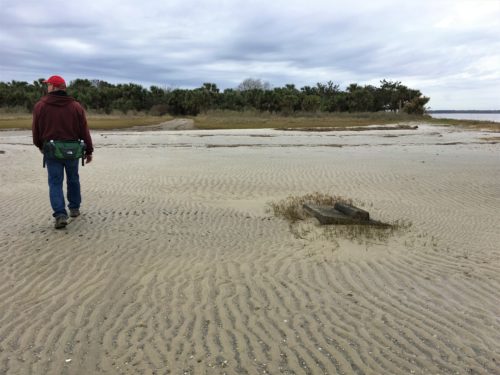
We’re still on the trail.
Evidently you can’t walk this one at high tide!
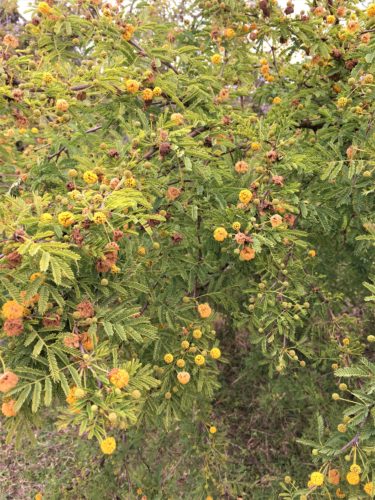
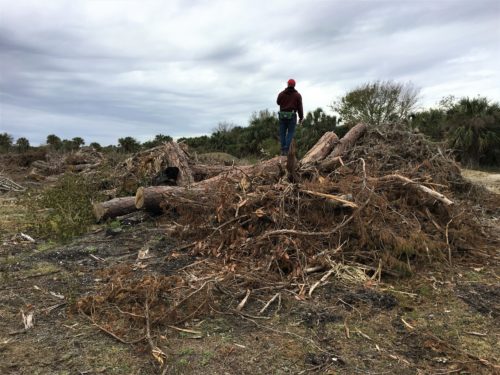
Scouting
There were no raccoons, but we did see armadillos, up close and personal!
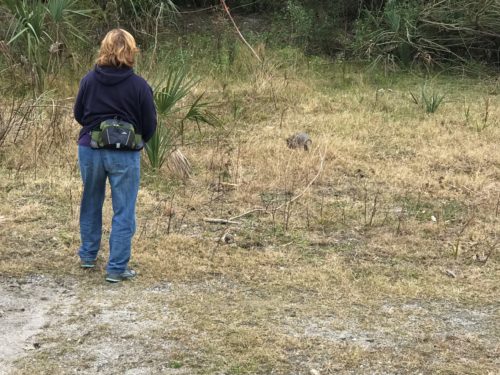
Getting in position to take pictures.
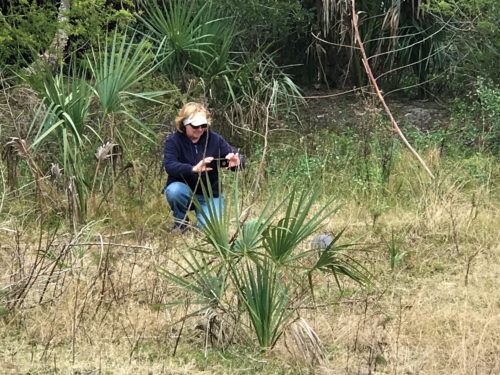
There we go!
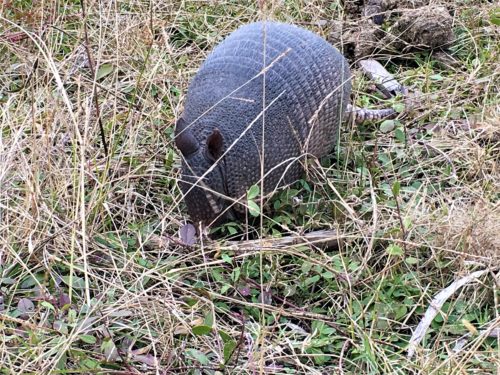
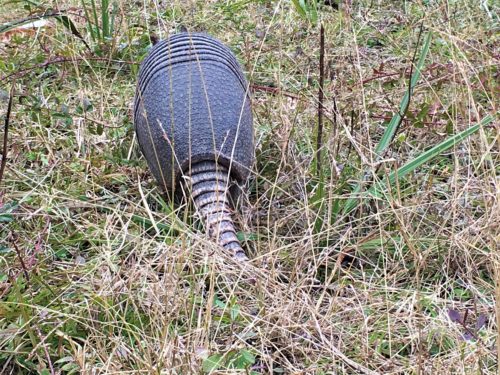
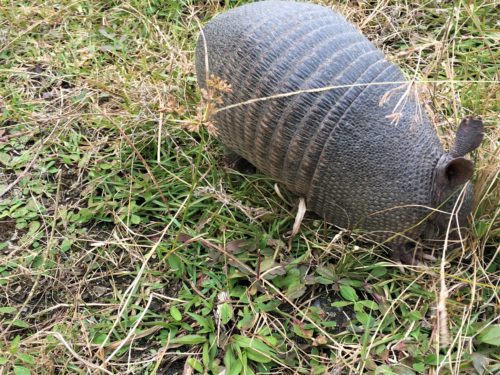
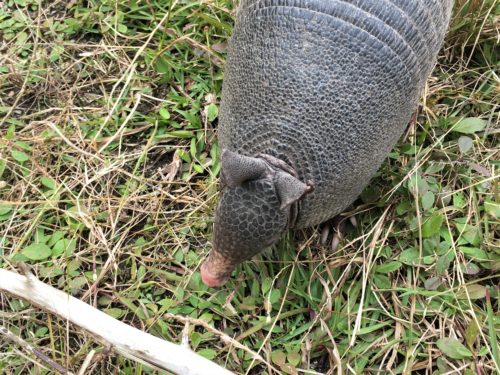
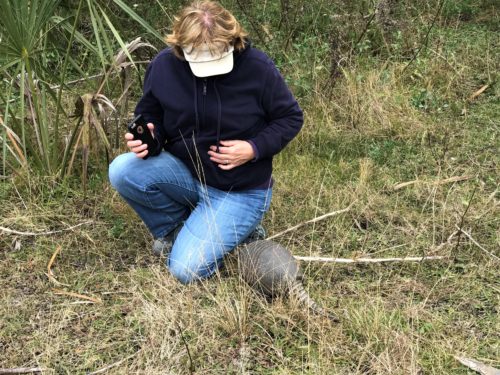
Well, I DID say — up close and personal!
I was able to touch it as it wandered away.
Felt like a cross between a turtle and a snake. : )
And dolphins, also, really up close! In fact, they were so close that we could hear them breathing!
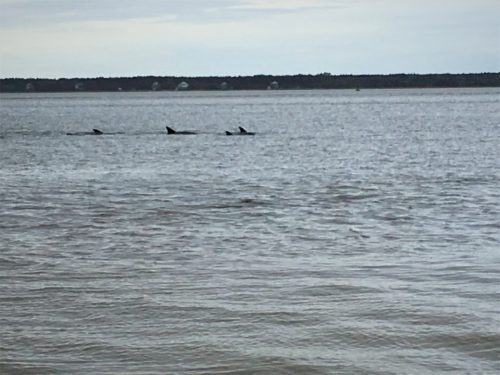
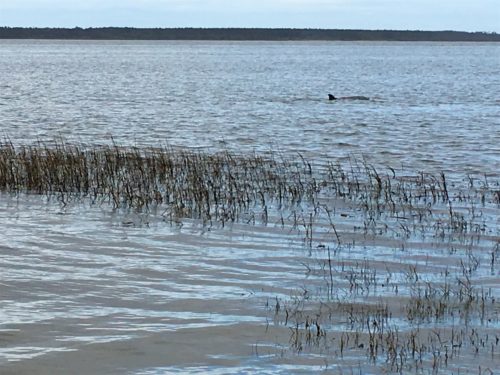
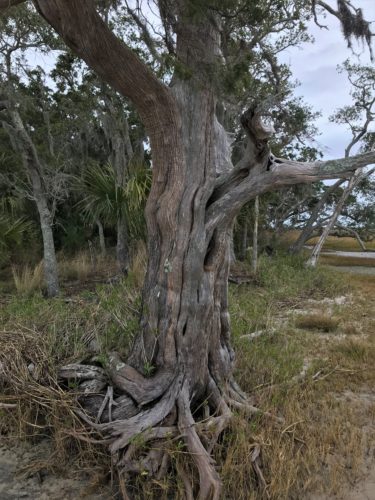
The Nightingale Trail held its own surprise! Look who we ran into!
So, I had some questions – – where did these horses come from? How many are there? I had to research a bit. Here’s what I found out:
- the first account was in 1742 when the Spanish found 60 horses in a corral in an English fort they captured
- by the end of the 1700’s, it was reported that there were about 200 domestic ones and some mules kept by landowners and free-ranging
- during the Civil War, most of them were sold or removed from the island
- when the Carnegie’s came, they brought about 50 of them
- from 1940-1960, property owners managed horses, but kept them as free-range
- by 1972 when the Park was established, the horses had become feral (as opposed to domestic)
- there are anywhere from 120-150 currently on the island and there’s concern that they’re eating too much, so other inhabitants aren’t able to get the food they need
- horses aren’t native, so some believe they shouldn’t be here at all, but they’re a great tourist attraction and no one feeds or cares for them so there’s no expense for that
Here’s my thought (horse lovers don’t read this!) Why not thin the herd like they do with hogs or deer? But then again, you can’t eat them and who wants to shoot a horse?
We didn’t know it at the time, but after playing back the videos, I noticed it was the same horse that blocked the other trail when we started. 😊
Back to the mansion grounds . . . .
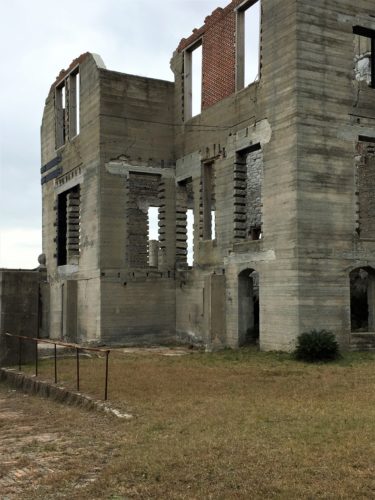
The side we hadn’t see yet
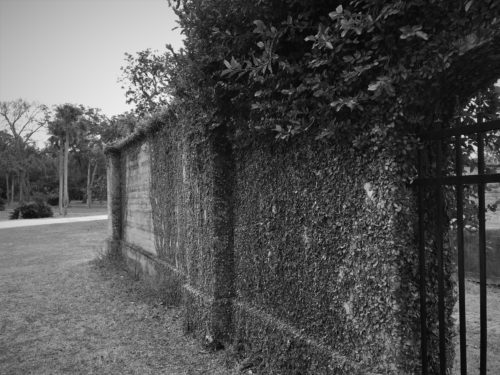
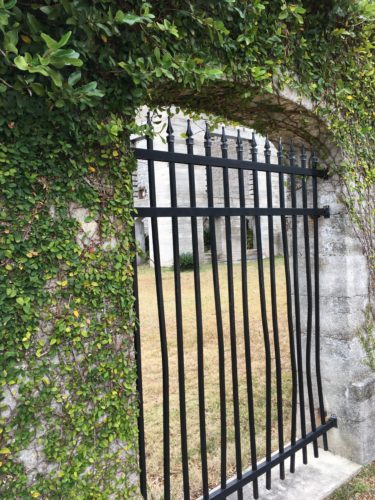
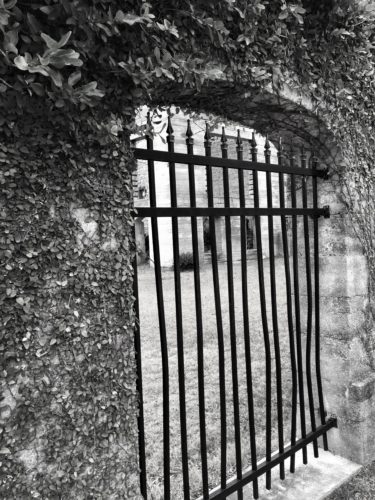
Creative photography
You like?
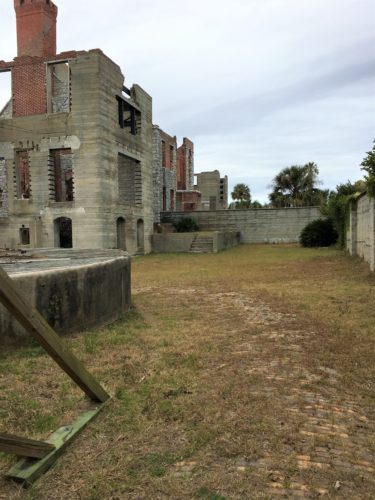
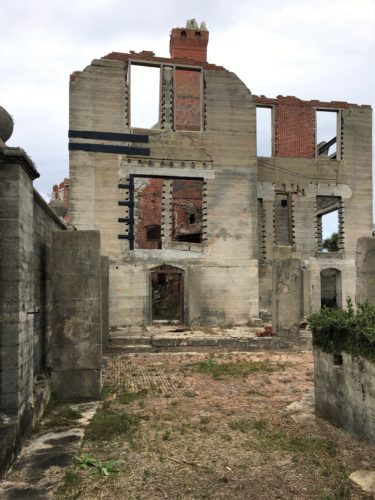
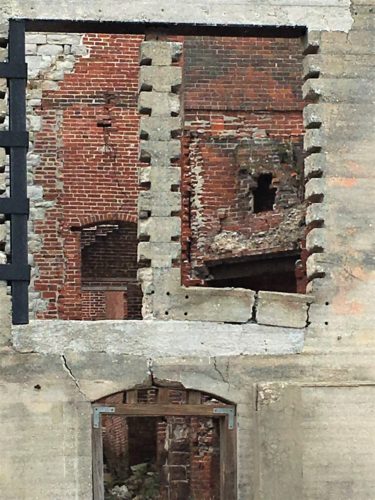
We think some evidence of the fire
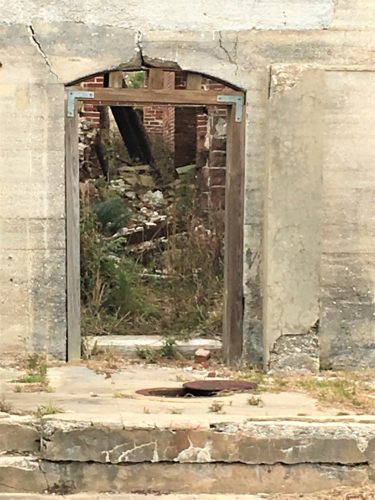
. . . . for a pit stop and a surprise! The bathroom is in the former laundry room and some of the stuff was there – right when we walked in the door.
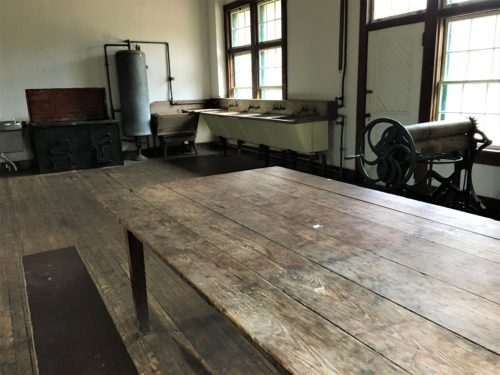
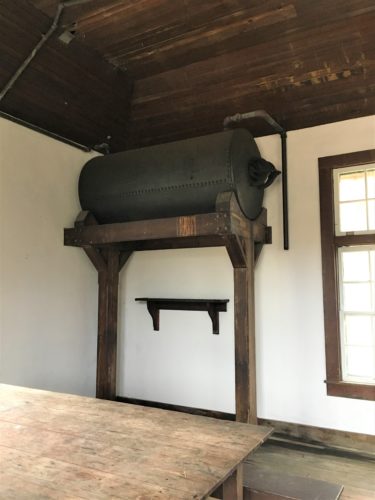
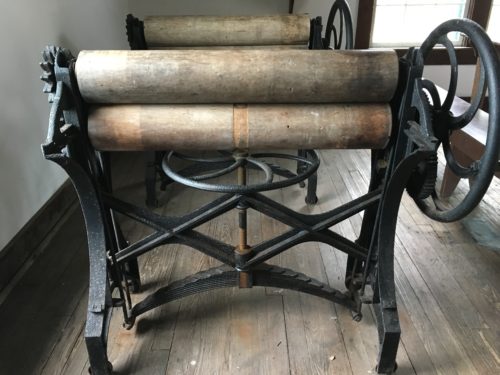
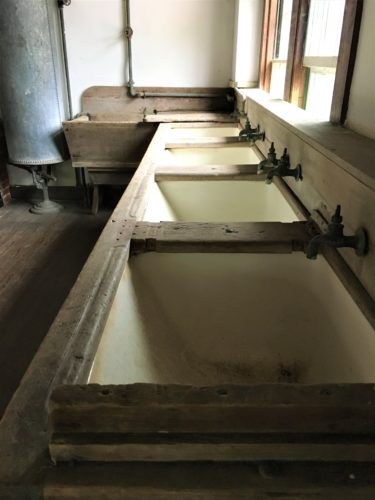
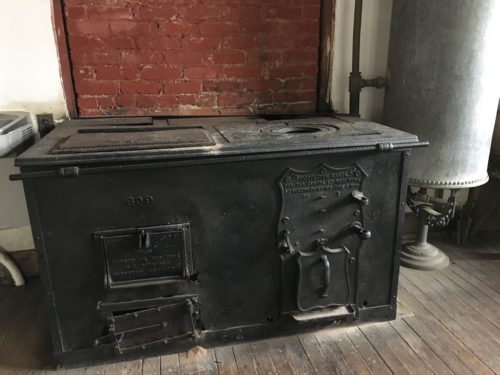
And what outing would be complete without . . . .
You guessed it! A cemetery!

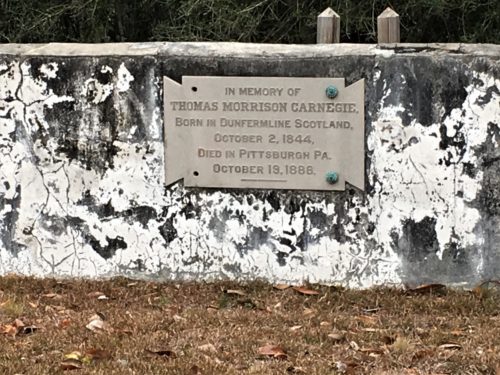
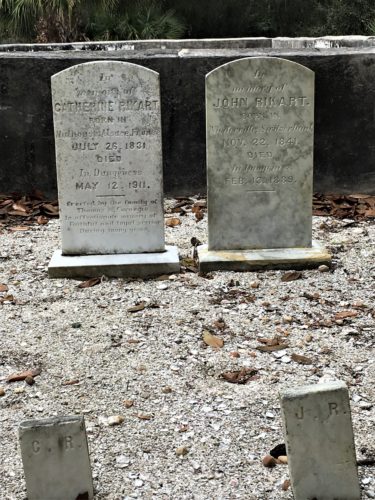
It didn’t say, but we think these were valued servants – – with the family, but outside the wall.
But Robert E. Lee’s dad, a Revolutionary War Major General, was buried here at one time! (He died while visiting in 1818 and they buried him in the family plot. In 1913, they moved him to Virginia to be with his family.)
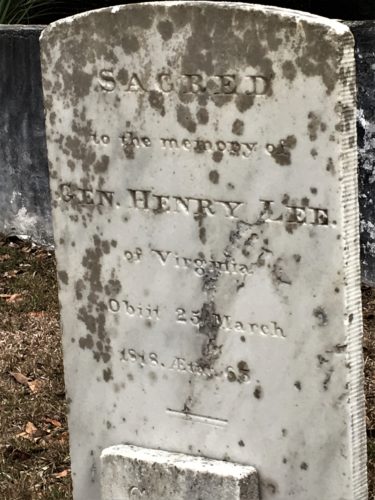
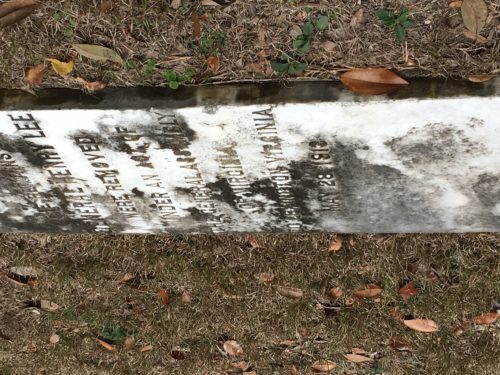
The tomb cover gives the information of when he was moved.
Errrrk! Detour!
Wow! The things they don’t teach us in school! Here’s what I discovered:
Major General Henry “Light Horse Harry” Lee III, was born in 1756. He graduated from Princeton in 1773 and returned home to prepare for the Revolutionary War. He was a skilled horseman and a natural calvaryman, soon commissioned as captain. He did so well, he attracted the attention and admiration of General George Washington and was rapidly promoted. In one attack, he captured 400 British soldiers with the loss of only one man. His skill soon earned him the nickname “Light Horse Harry.”
He resigned after the British surrendered and returned to Virginia to marry his cousin, Matilda Lee in 1782.
Matilda died in 1790, leaving three young children and a husband desperate with grief.
Two years later, Harry was elected Governor of Virginia, serving three one-year terms. While living in Richmond, he fell in love with Ann Hill Carter. In 1793 they were married.
He was appointed to the Continental Congress in Philadelphia, and upon the death of President George Washington, Harry was asked by Congress to deliver a tribute: First in war, first in peace and first in the hearts of his countrymen…second to none in the humble and endearing scenes of private life.
(I actually recognize the beginning of this quote!)
After the death of his idol, Harry’s fortunes began to decline rapidly. The support of a family of six, coupled with disastrous land speculation, reduced him to financial poverty.
Then, on January 19, 1807, in the large upstairs room in the family home, Ann gave birth to their fifth son, Robert Edward, named after two of his mother’s favorite brothers. As Robert was learning to walk, his father was carried off to debtor’s prison.
In 1810, the family moved to Alexandria, where a new life on a modest scale was made possible by a legacy from Ann’s father.
As was the fate of so many of our Revolutionary War heroes, “Light Horse Harry’s” last years were marred by sorrow and pain. Internal injuries, received when he was beaten by a mob as he defended a friend, kept him in constant physical pain. He sought relief in the warm climate of the West Indies. When his health continued to decline, Harry attempted to return home, but died on Cumberland Island, Georgia, in the home of the daughter of his former commander, Nathanael Greene.
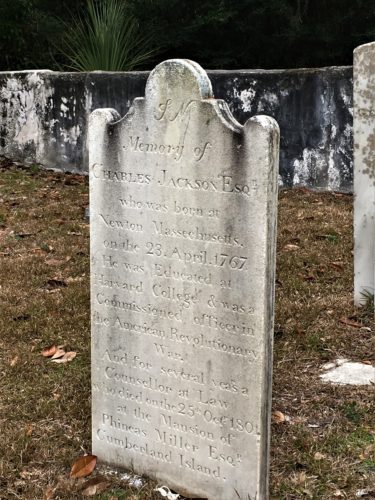
Another visitor who died here.
Not sure I’d want to visit . . .
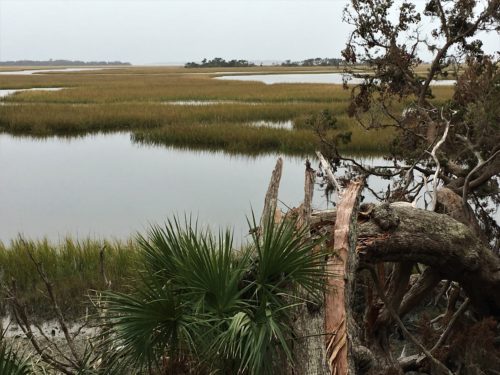
View from the cemetery
We saved the beach for mid-afternoon.
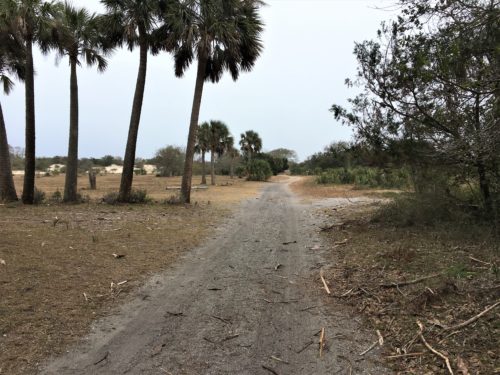
Heading to the beach
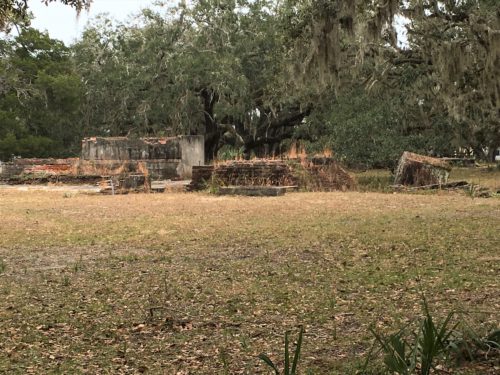
More ruins
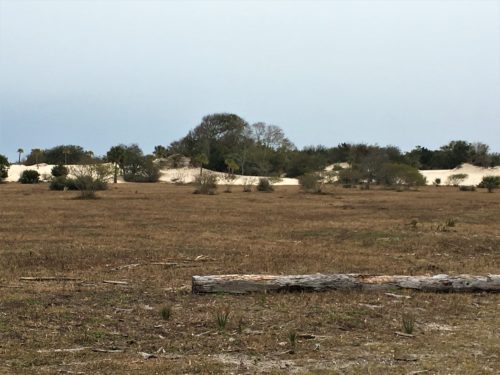
Still walking
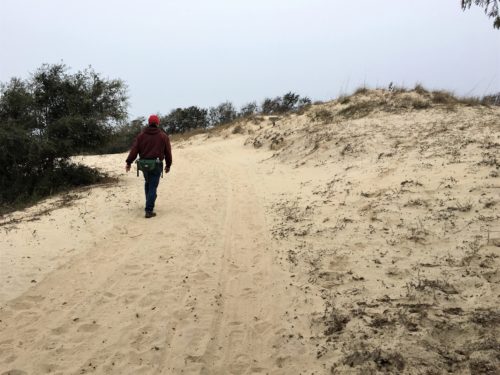
Closer . . .
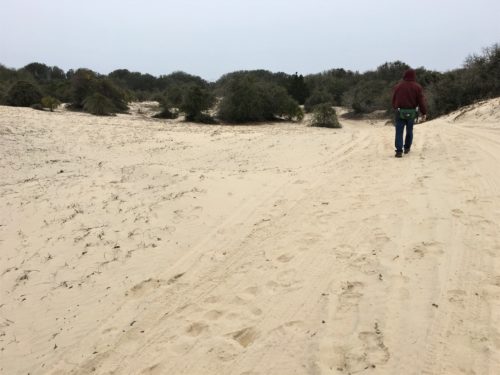
Closer . . .
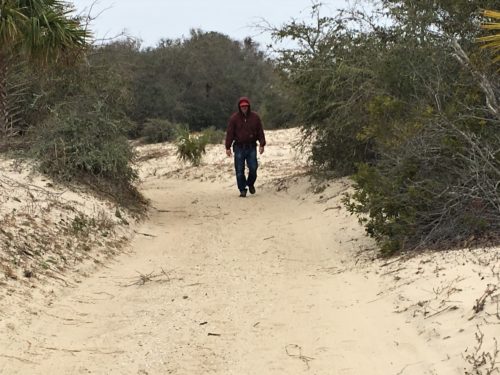
Closer . . . and wetter . . .

Oh, man! How far IS it??
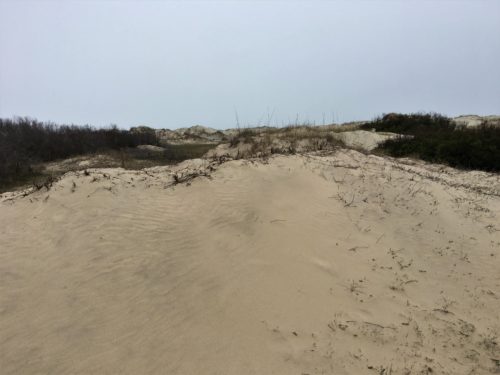
We can hear it! Where is it?

There’s a marker . . .
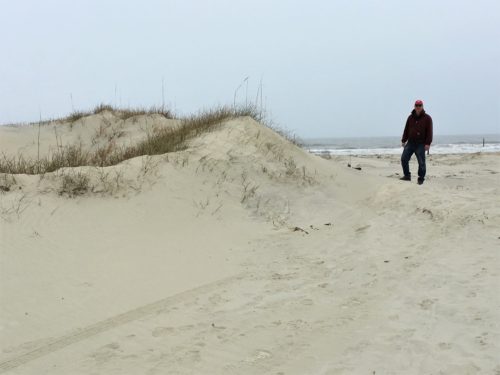
At least we can SEE it now!
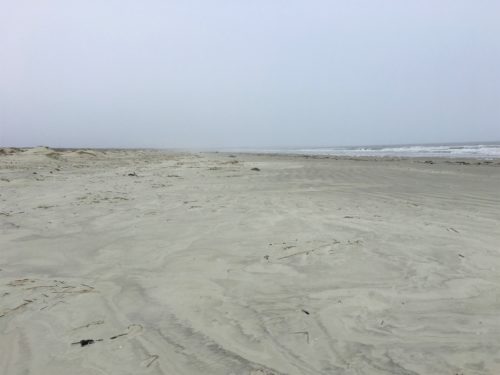
We made it!
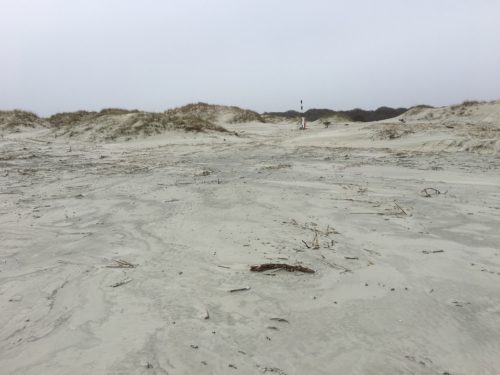
There’s the trail marker in case we decide to go back this way.
By then, it had started drizzling, the breeze picked up and the clouds moved in. We got wet. A few times, it was better for me to actually put my glasses in my pocket so I could see more clearly! But what fun! We saw some unusual things while we walked the 1.5 miles to the designated exit we needed!
There was some mighty cool stuff on the beach!
A Great Blue Heron – actually in the surf!
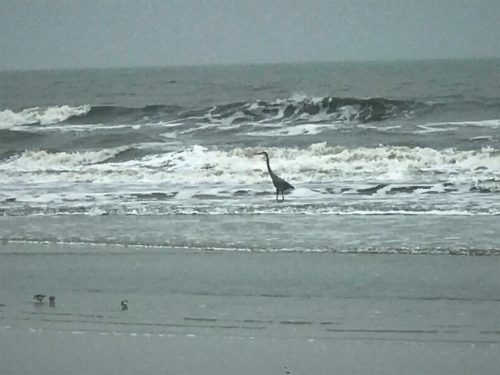
A herd of 4 deer in the dunes! Sorry, no picture. They were too far away and gone by the time we got there.
Gobs and gobs of horseshoe crabs of all different sizes!
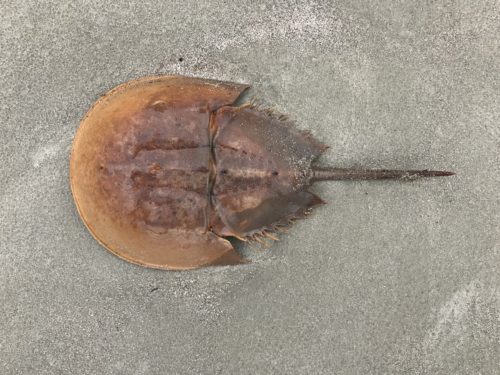
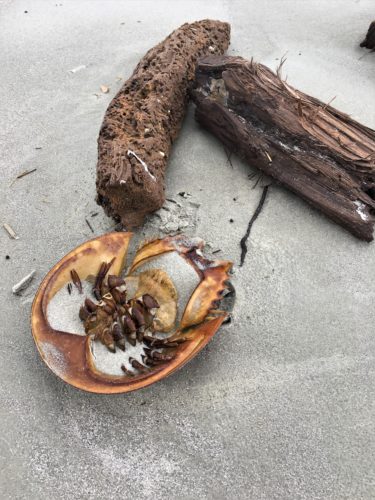
And lots of shells and driftwood!
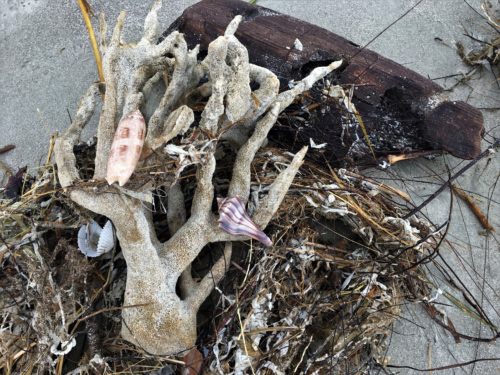
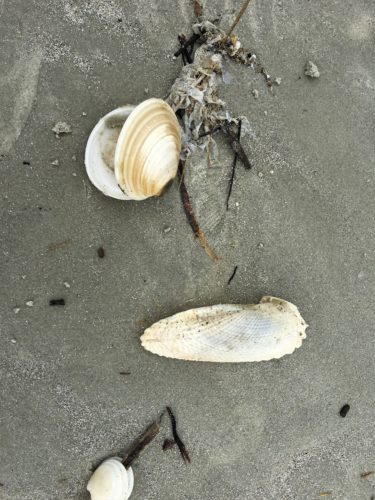
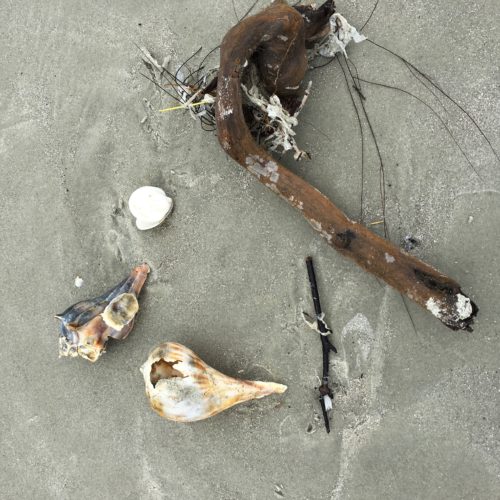
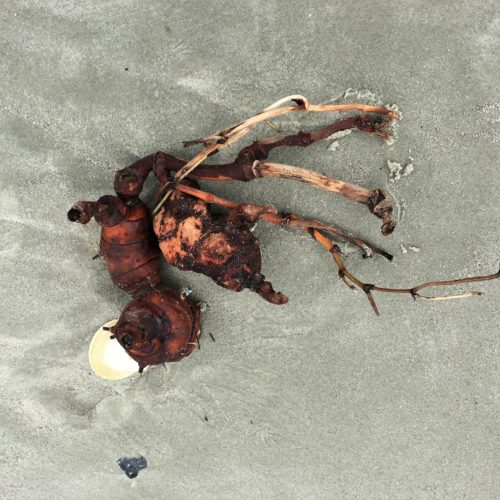
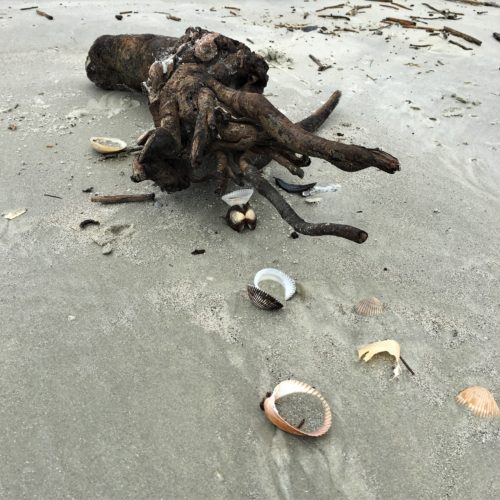
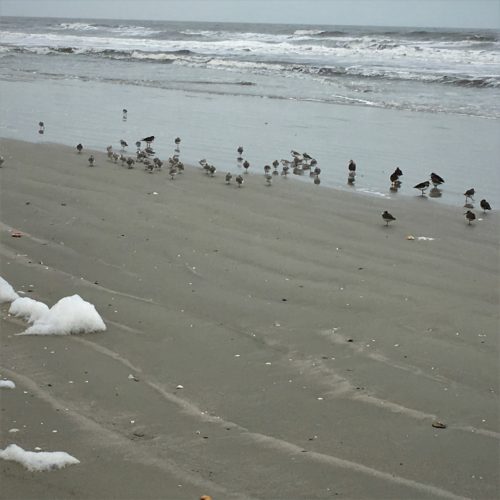
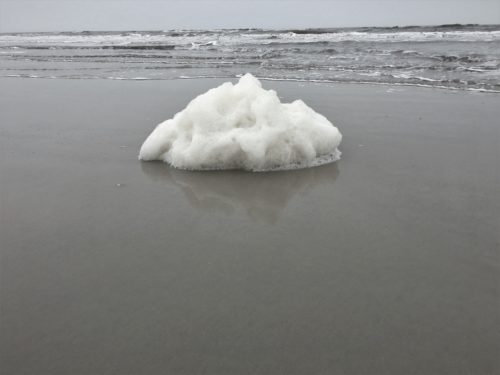
Look!
An iceberg!
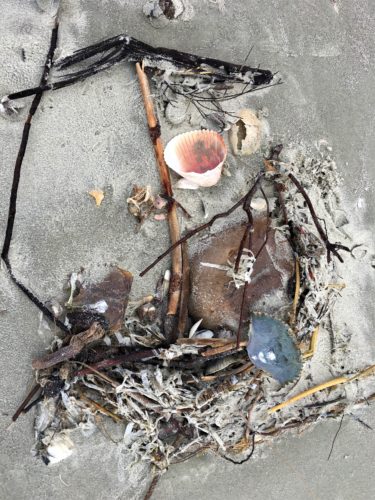
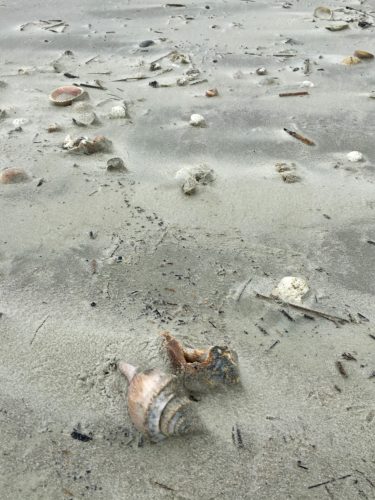
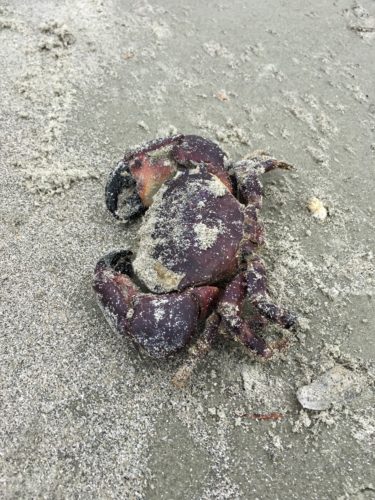
I don’t know what kind of crab this is. Thought it was a Dungeness, but it’s not. ??????
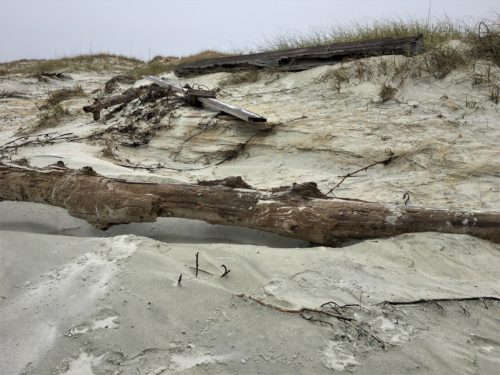
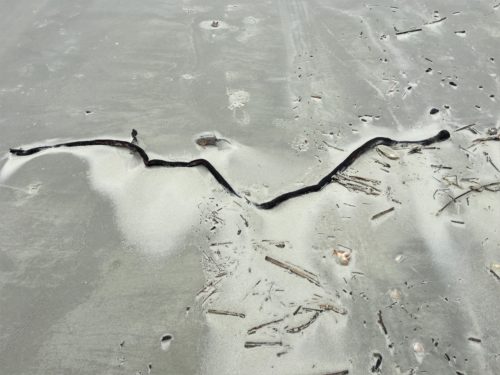
Looks like a sea snake to me . . . : )
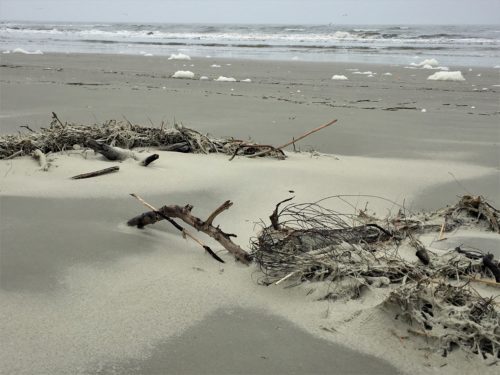
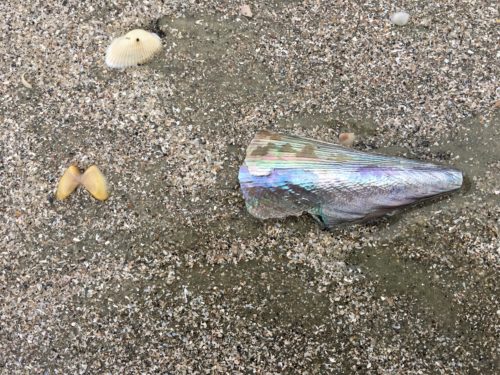
I don’t know what this is, but it’s beautiful!
We saw several today.
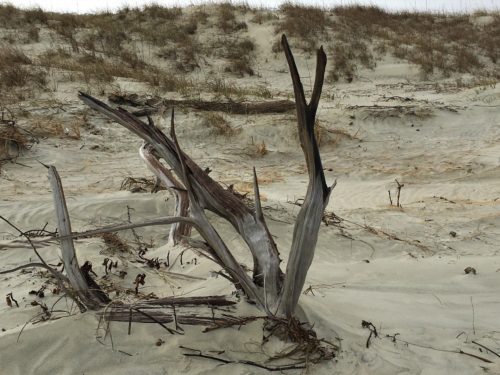
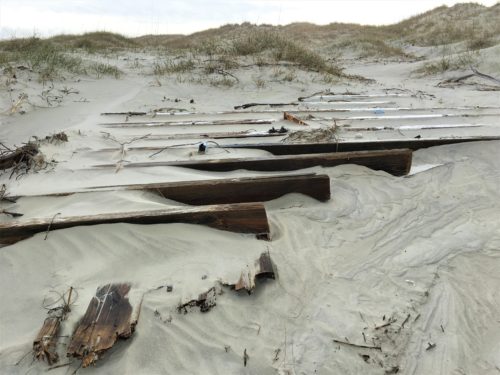
This used to be a house.
See the electric?
The electrician spotted that. : )
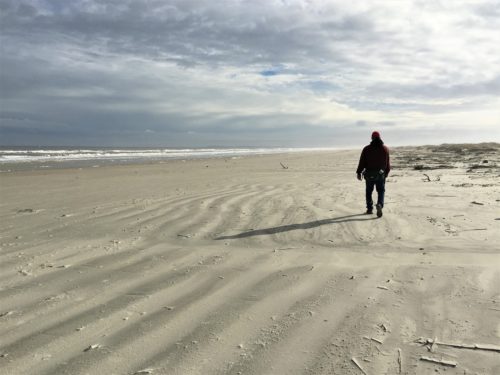
The sun came out for just a few minutes and warmed us up a bit!
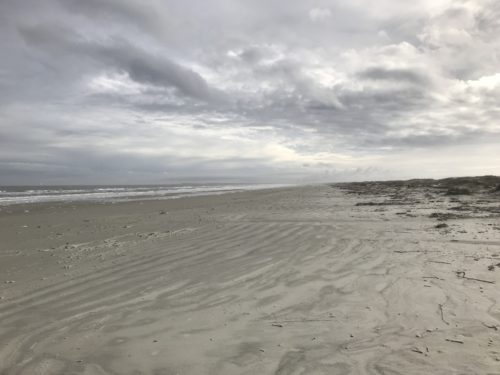
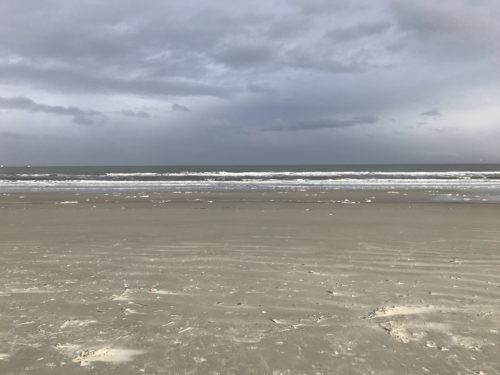
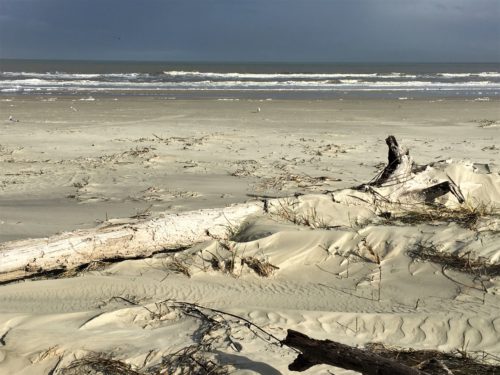
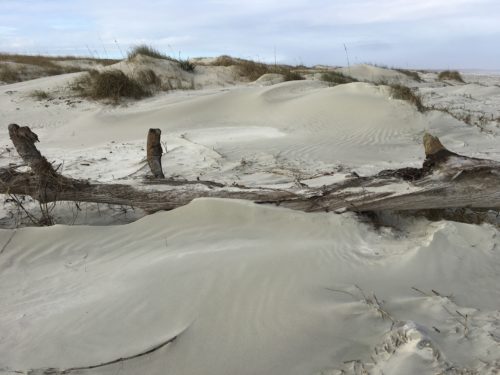
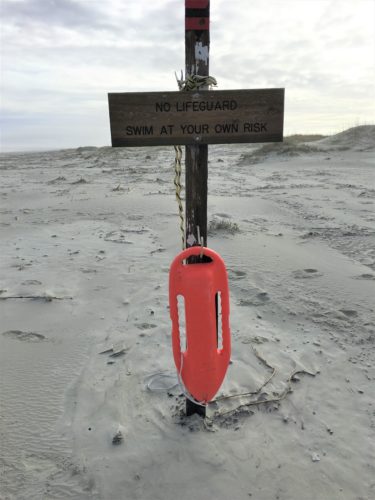
That little thing is supposed to save me?
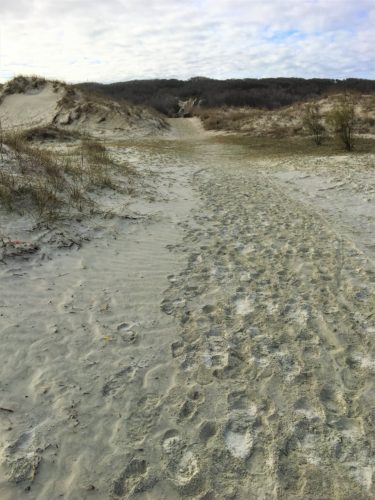
Pretty sure if we follow all these footprints, we’ll find our way. : )
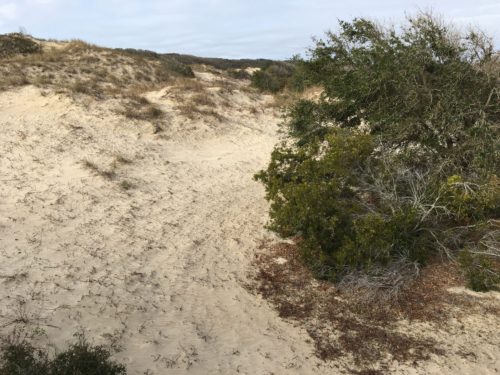
So we walk . . .

and walk . . .
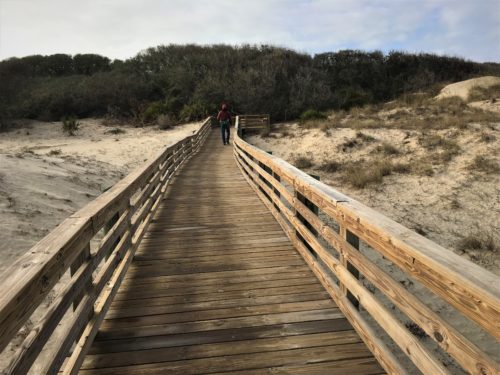
and walk . . .
Same distance as we had to get to the beach – about 1/2 mile.
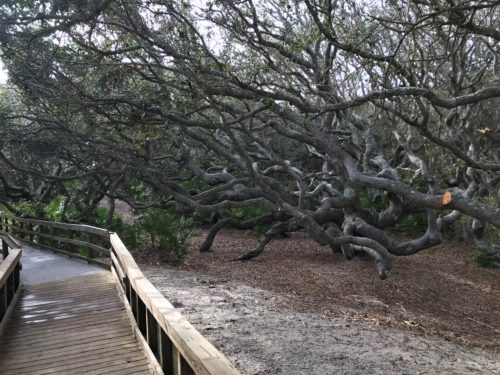
Day is done, gone the sun (almost) . . . . time to get back to catch the ferry home. It was a long day, and now that the sun is sinking, we’re getting quite chilled from the damp and cooler temperatures. Dinner?
Little Caesar’s picked up on the way home.
TOTAL MILES: 9
Year to Date: 18.25
Average Daily: 2.28 (we’re creeping up!)
